Modifiers
- Modifiers alter the appearance of the base color in different ways without diluting the color, which creates a wide variety of possible colors and patterns.
- Doesn't affect skin, eye or hoof/horn color.
- Always goes below White patterns.
Bronze
BrzBrz / nBrz
Appearance
Bronze causes the mane and/or tail to take on a rich brown color. The hair can be a solid color or have a faded/ombre effect.
Multiple different shades of bronze can be present at the same time and will have soft gradients blending them together with the base coat. The bronzing in the mane is allowed to be a different shade than the bronzing in the tail, and the body roaning can be a different shade as well.
It can optionally cause bronze roaning anywhere on the body.
Bronze can range anywhere from near-black dark brown, to rich red/brown, to a near golden.
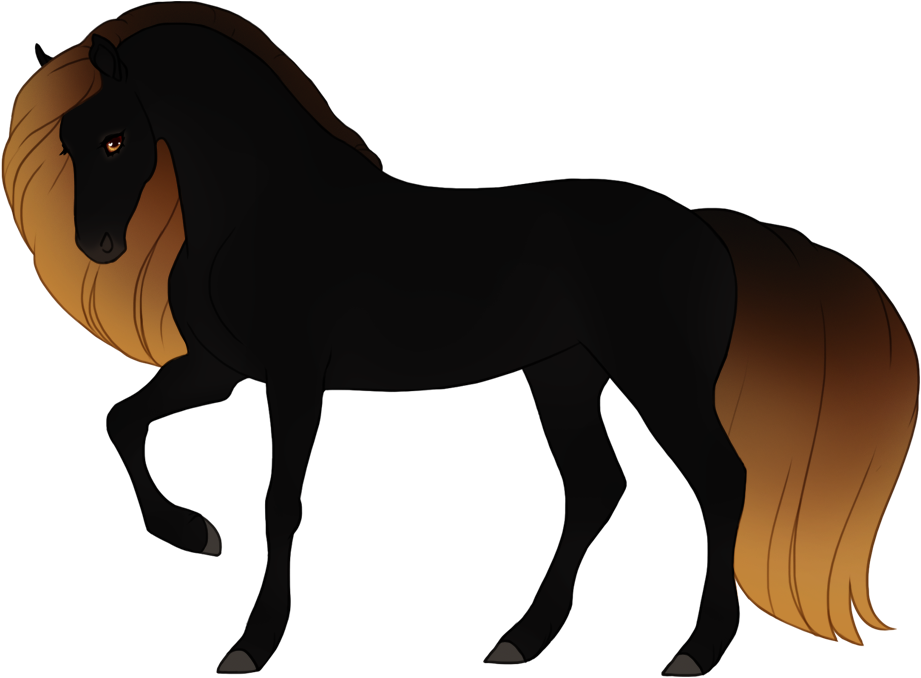
Bronze black
black + bronze
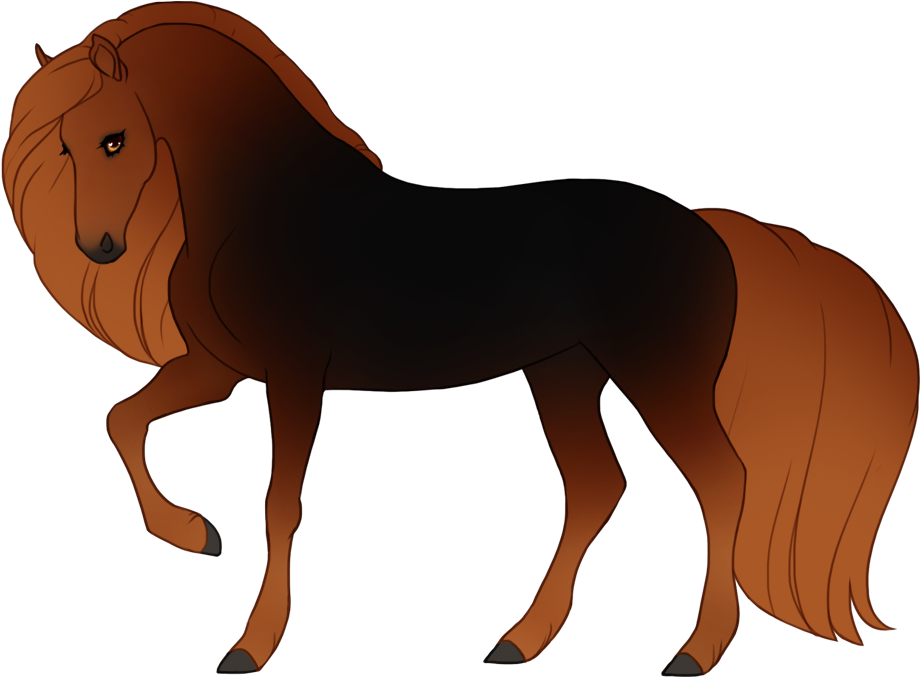
Bronze black
black + bronze
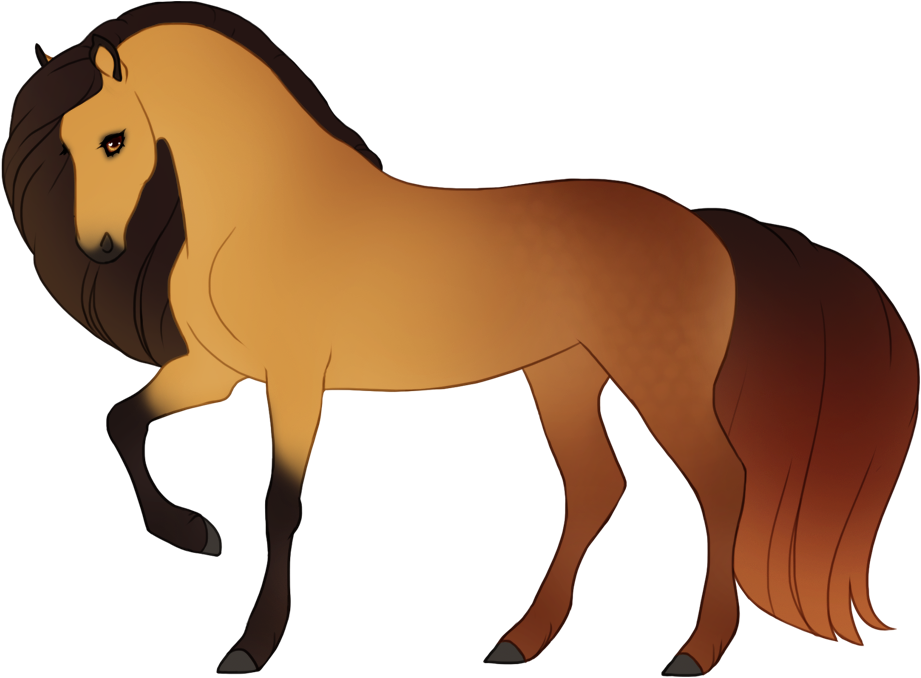
Bronze buckskin
bay + cream + bronze
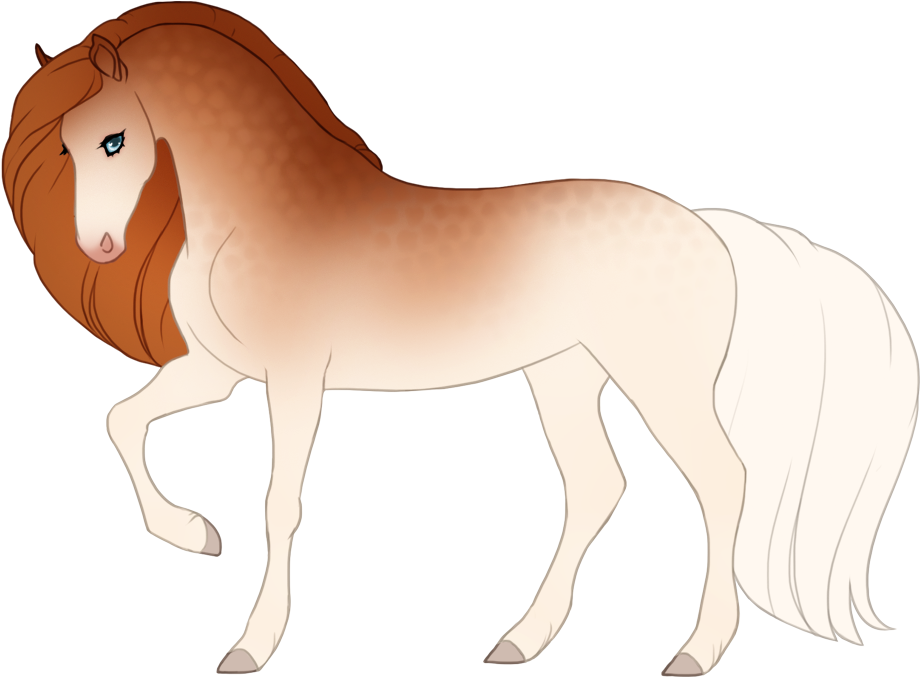
Bronze cremello
chestnut + double cream + bronze
Optional effect: Dapples
Bronze can cause bronzed-colored dapples on the base coat, as well as basecoat-colored dapples in the bronze roaning. The dapples can be the same or a different shade of bronze than the roaning, and be present even if there is no roaning at all.
Dapples is not written in the phenotype, a bronze horse with dapples would still only be described as for example "chestnut bronze".
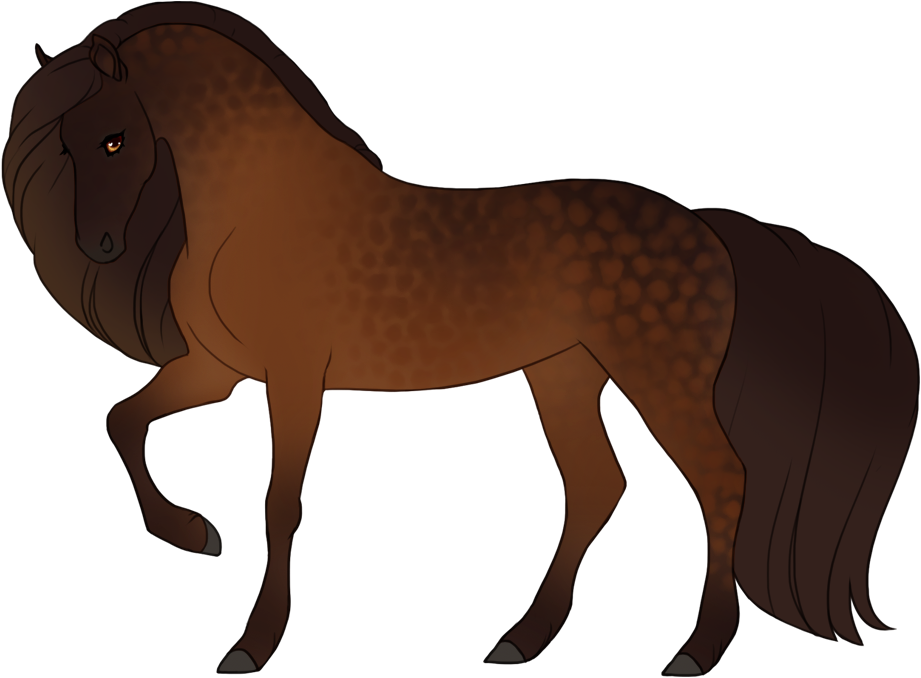
Dark bronze with dapples on chestnut
chestnut + bronze
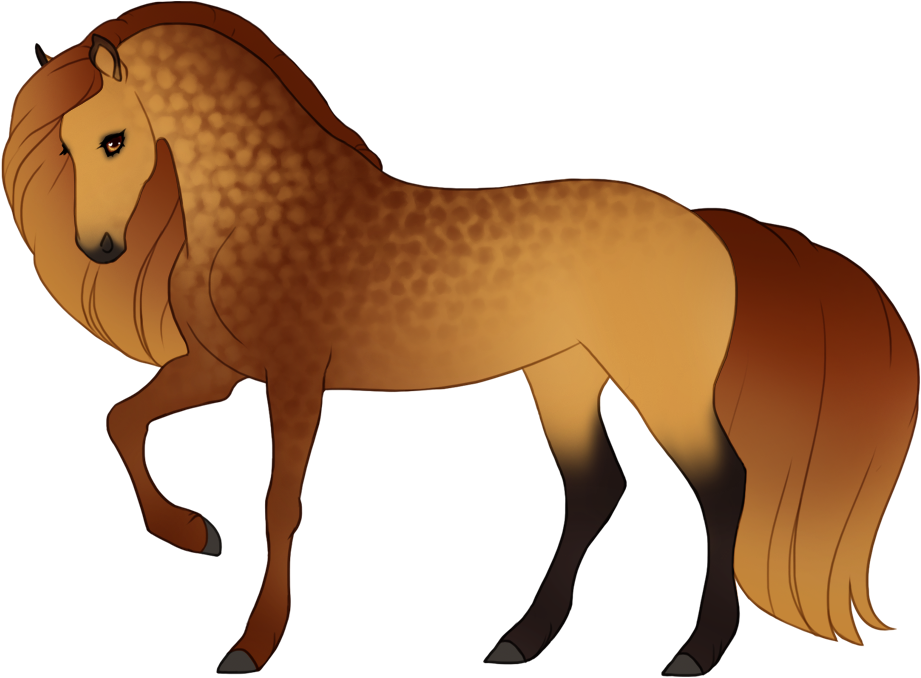
Bronze with dapples on buckskin
bay + cream + bronze
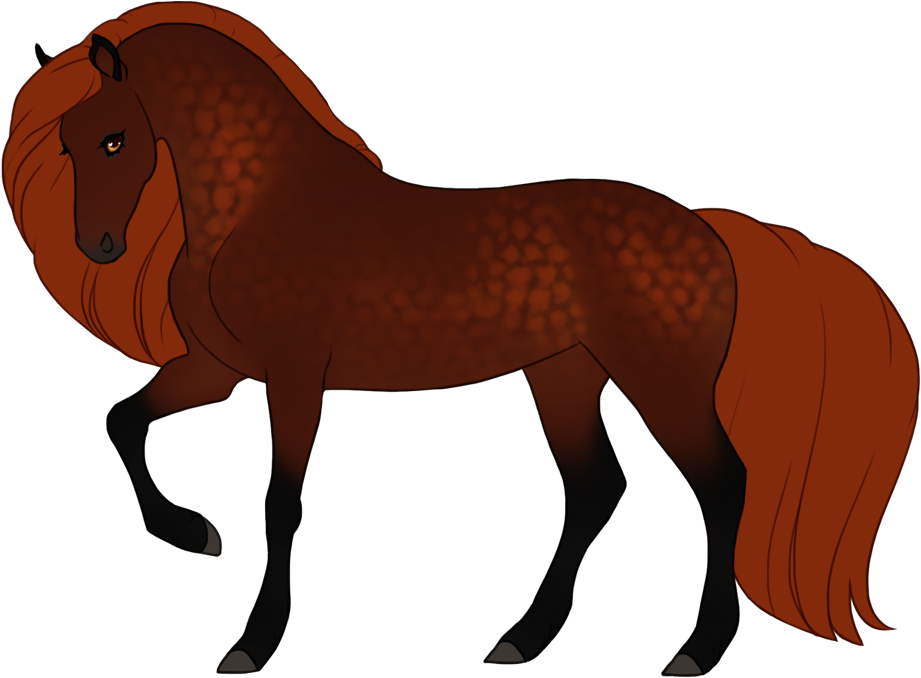
Bronze with dapples on bay with no body roaning
bay + bronze
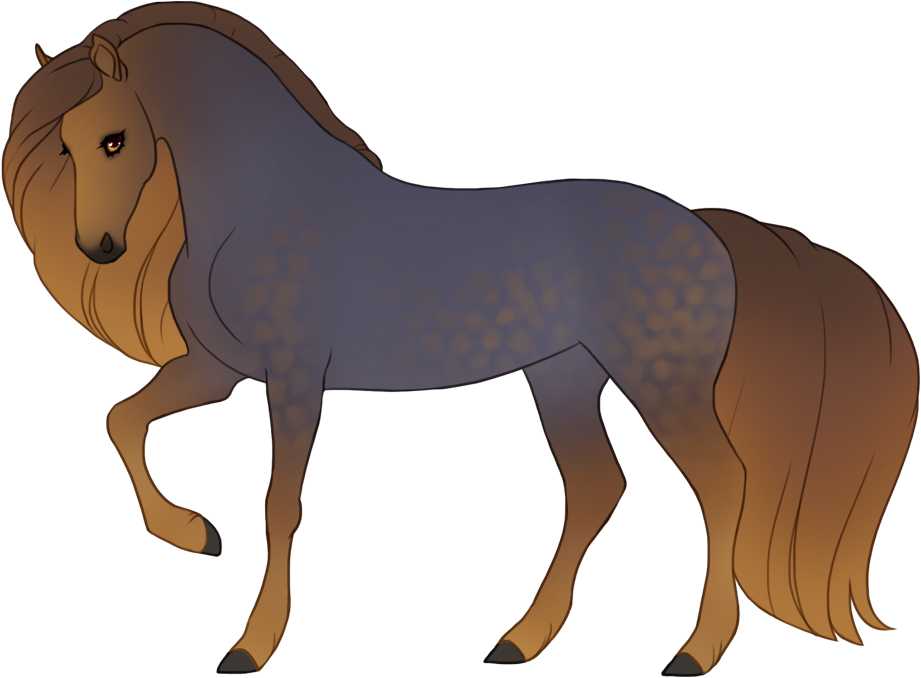
Bronze with dapples on blue chestnut
chestnut + blue + bronze
Appearance
Flaxen will lighten the mane and tail, anywhere from just slightly lighter than the body coat to a creamy white.
The hair can either be a solid colour, or have a gradient "ombre" effect where the roots have a color similar to the body coat and the tips are much lighter.
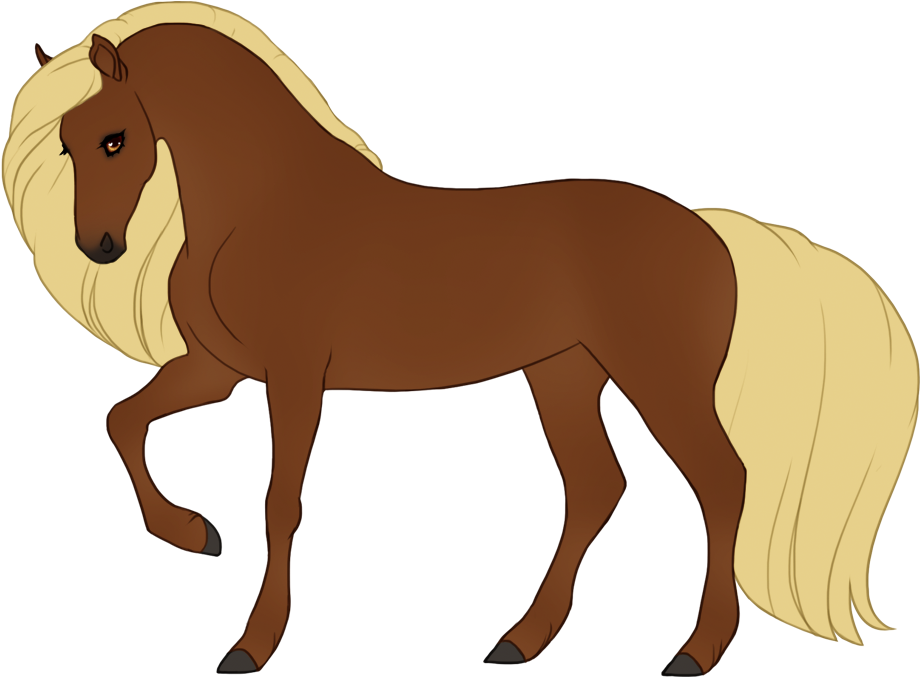
Flaxen chestnut with solid mane/tail
chestnut + flaxen
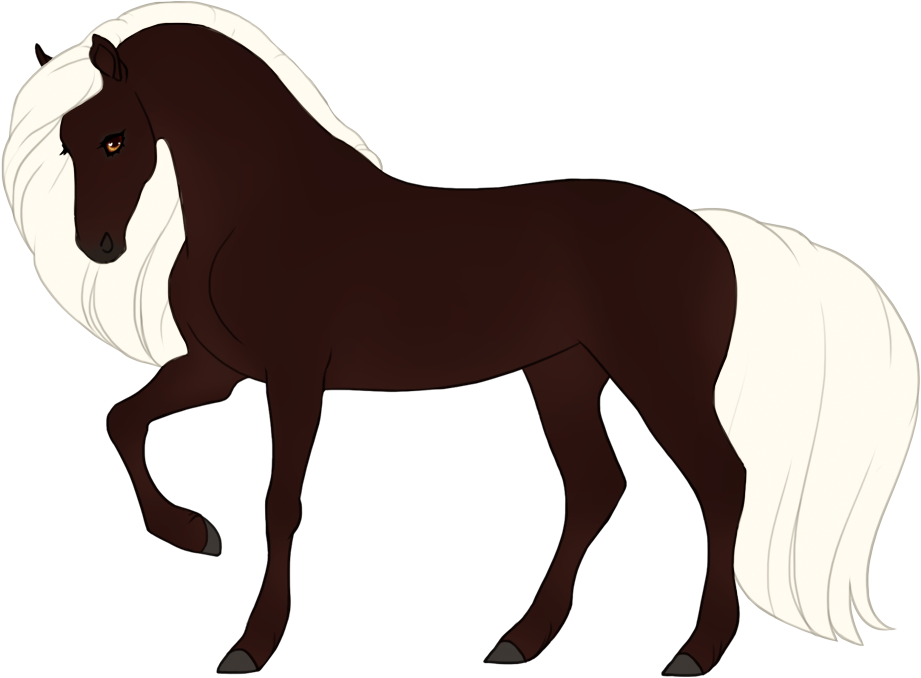
Flaxen liver chestnut with solid mane/tail
chestnut + flaxen
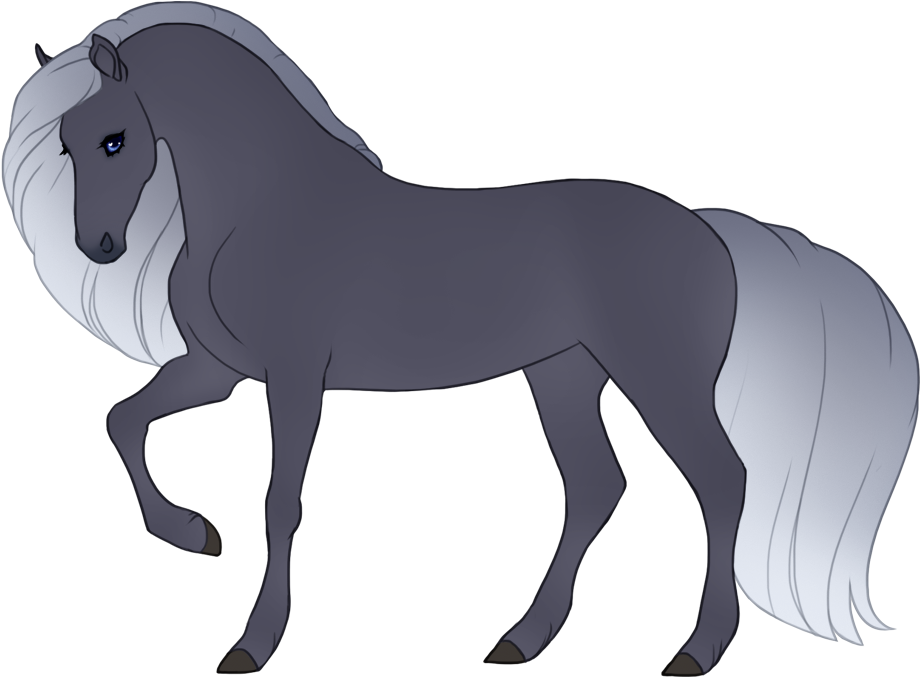
Blue flaxen chestnut with gradiented mane/tail
chestnut + blue + flaxen
Optional effect: Mealy
Flaxen can cause a mealy soft gradient effect on the lower legs and/or around the muzzle, in a similar color as the mane and tail.
Mealy should not go above the knees on the legs.
Mealy is not written in the phenotype, a flaxen horse with mealy effect would still only be described as for example "flaxen chestnut".
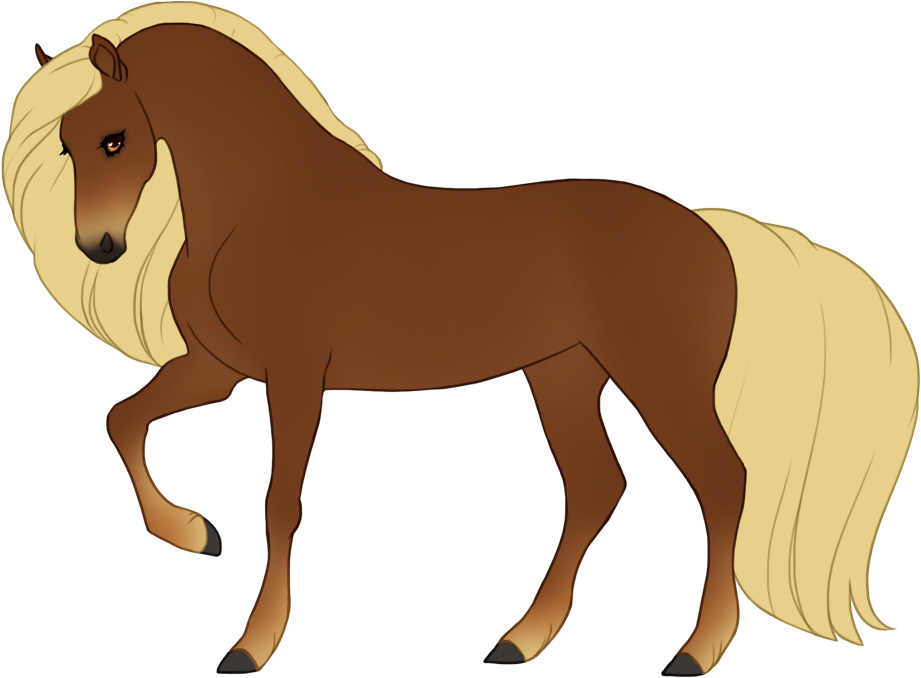
Flaxen chestnut with mealy effect
chestnut + flaxen
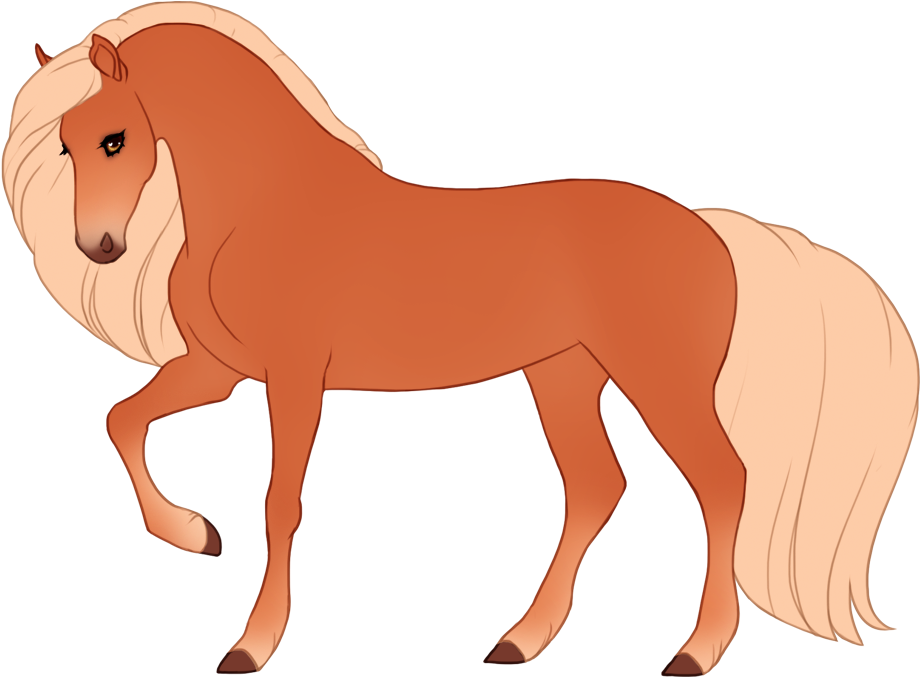
Flaxen honey with mealy effect
chestnut + tawny + flaxen
Optional effect: Speckles
Flaxen can have light speckles along the body coat, scattered randomly or arranged in simple patterns. They can be gathered in small clumps similar to flowers, but each individual speckle should still be a somewhat natural-looking spot or smudge.
Speckles will always be the same color as the mane/tail, or a mix between the mane/tail and the body coat. Multiple colours within the speckles are possible, either as gradient or individually coloured speckles.
Speckles is not written in the phenotype, a flaxen horse with speckles would still only be described as for example "flaxen chestnut".
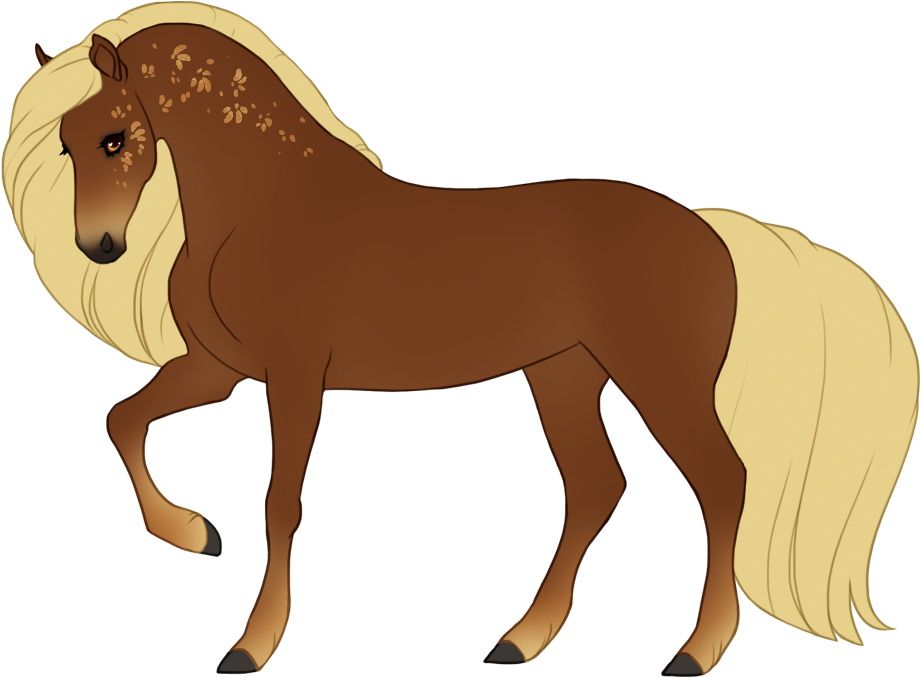
Flaxen chestnut with mealy and speckles
chestnut + flaxen
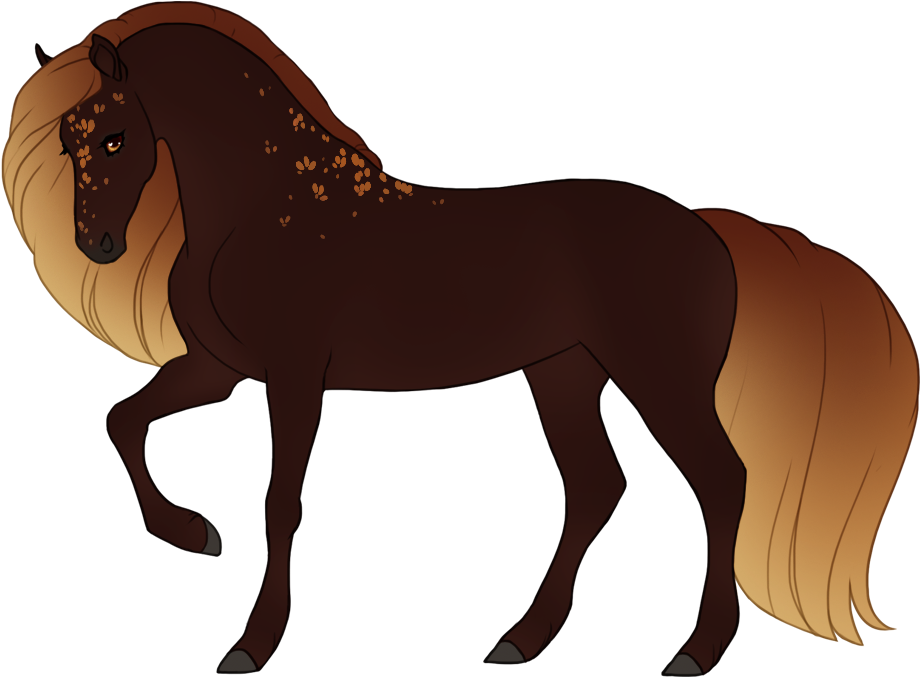
Flaxen liver chestnut with speckles
chestnut + flaxen
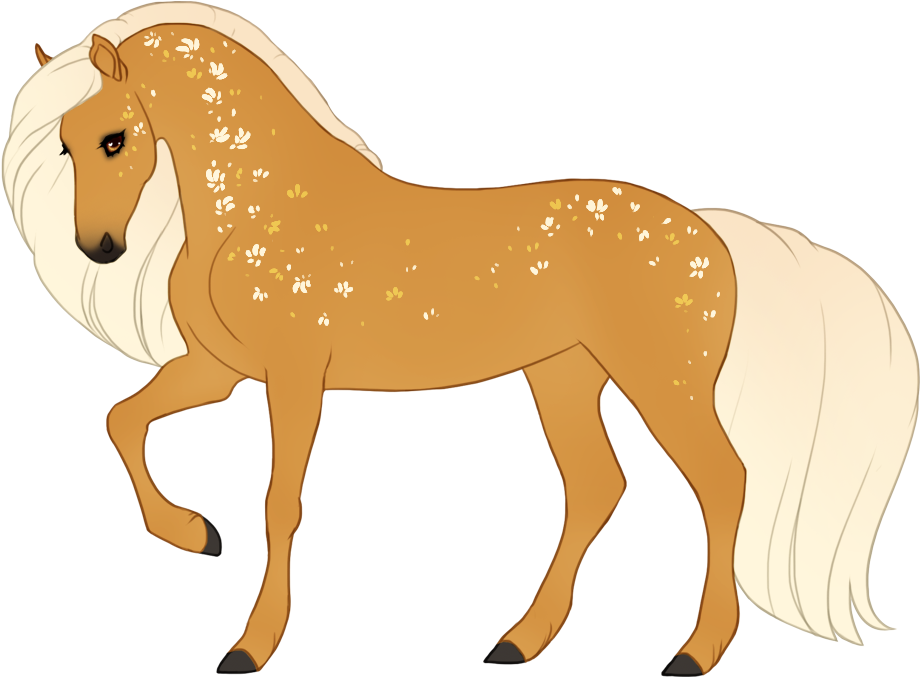
Flaxen palomino with speckles
chestnut + cream + flaxen
Grey
GG / nG
Appearance
Grey causes the coat to gradually lose pigment and turn white as the horse ages.
Each horse greys out at their own pace, there's no rule dictating how greyed out it has to be at a certain age and it's entirely up to the owner to decide how far along the greying process they are and whether they will continue to grey or if they will stay that color.
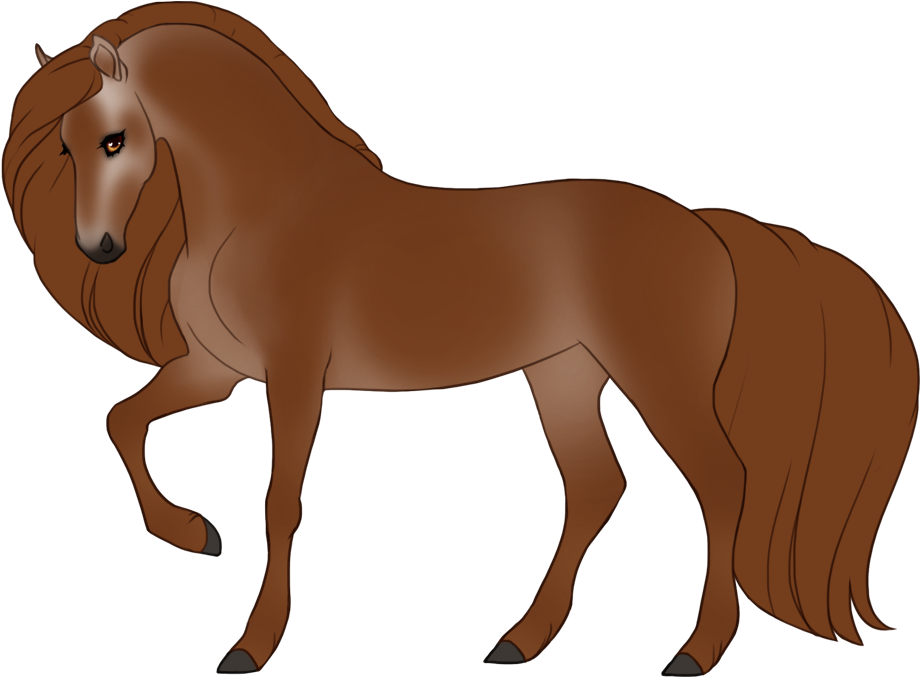
Minimally grey on chestnut
chestnut + grey
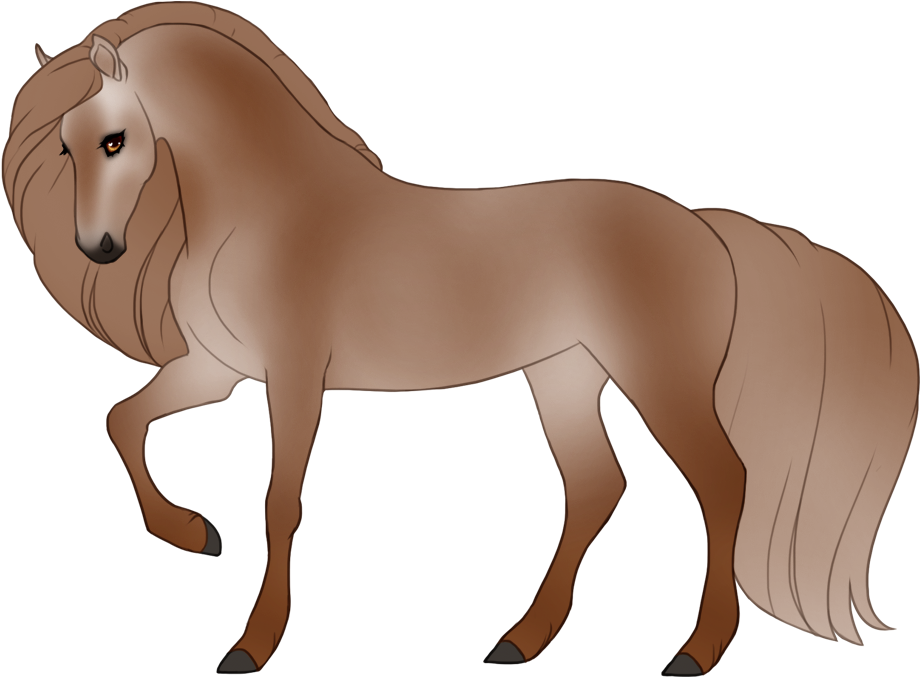
Medium grey on chestnut
chestnut + grey
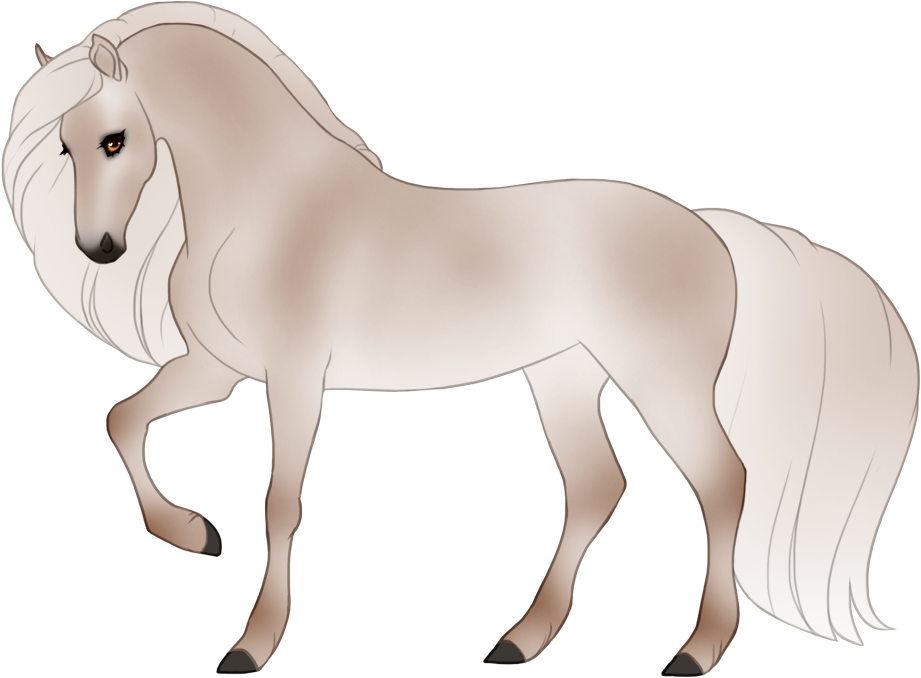
Grey on chestnut
chestnut + grey
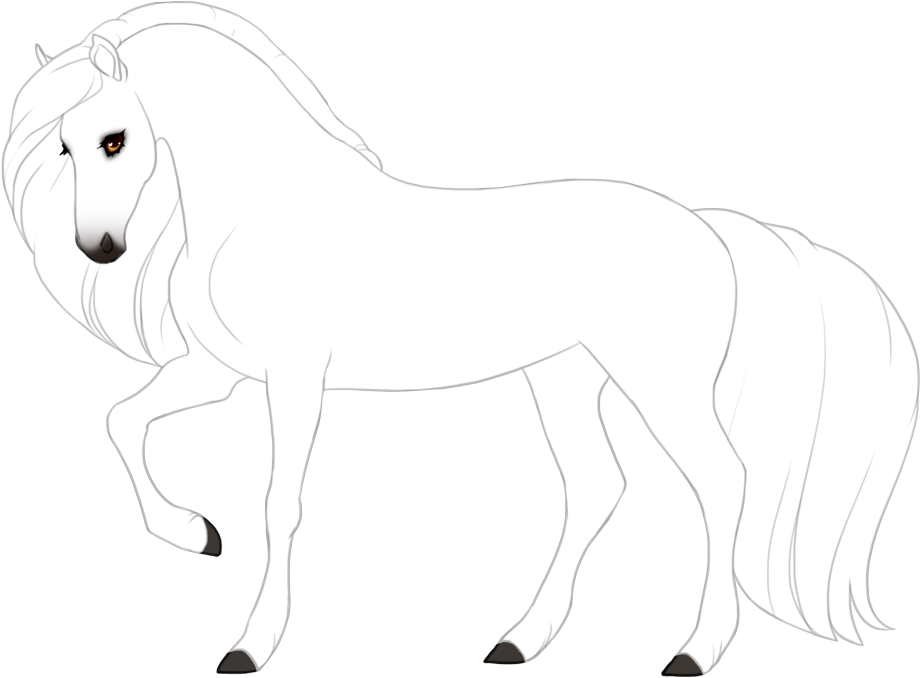
Fully greyed out chestnut
chestnut + grey
Optional effect: Dapples
Grey can optionally have greyed out dapples, or dapples that are darker.
Dapples is not written in the phenotype, a grey horse with dapples would still only be described as for example "grey on chestnut".
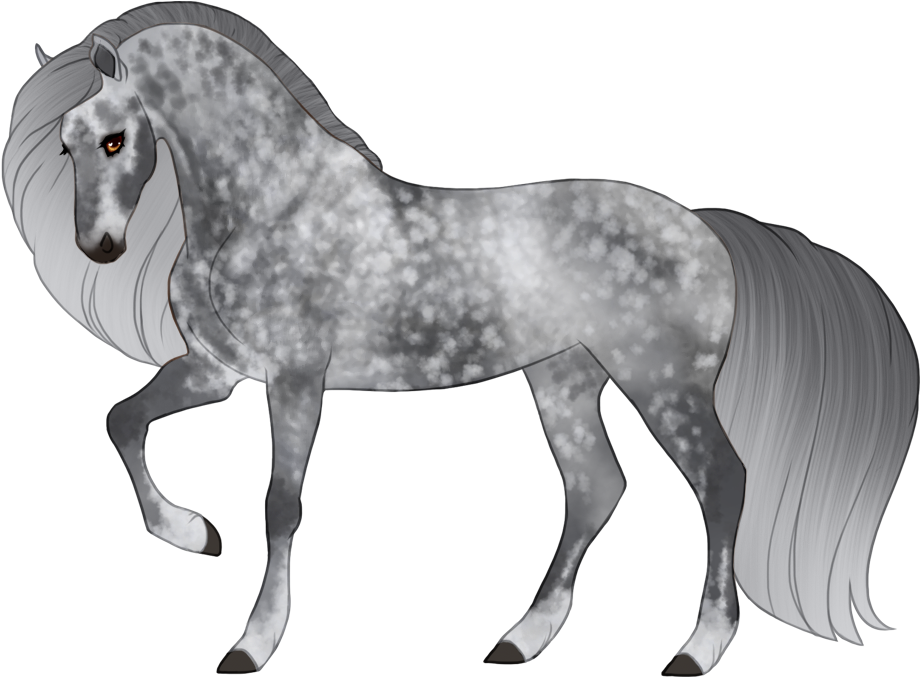
Grey on black with grey dapples
black + grey
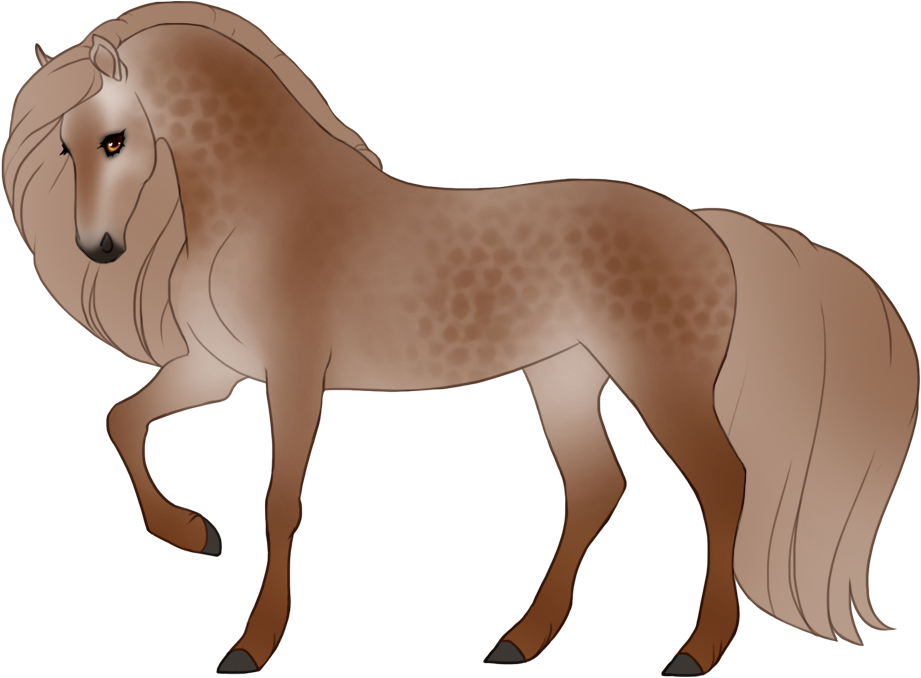
Grey on chestnut with dark dapples
chestnut + grey
Optional effect: Fleabitten and Mismarked grey
Fleabitten grey causes ticking/freckles in the grey, showing the ungreyed basecoat.
Mismarked grey (also known as "bloody shoulder") causes random areas to not be affected by grey, and remain the base coat without losing pigment. These areas can be anywhere on the body and in any natural shape, the edges of the mismarked grey can be both smooth/sharp or roaned. The mane and tail will not grey out in the mismarked areas.
Fleabitten and mismarked grey is not written in the phenotype, it is still only written as grey.
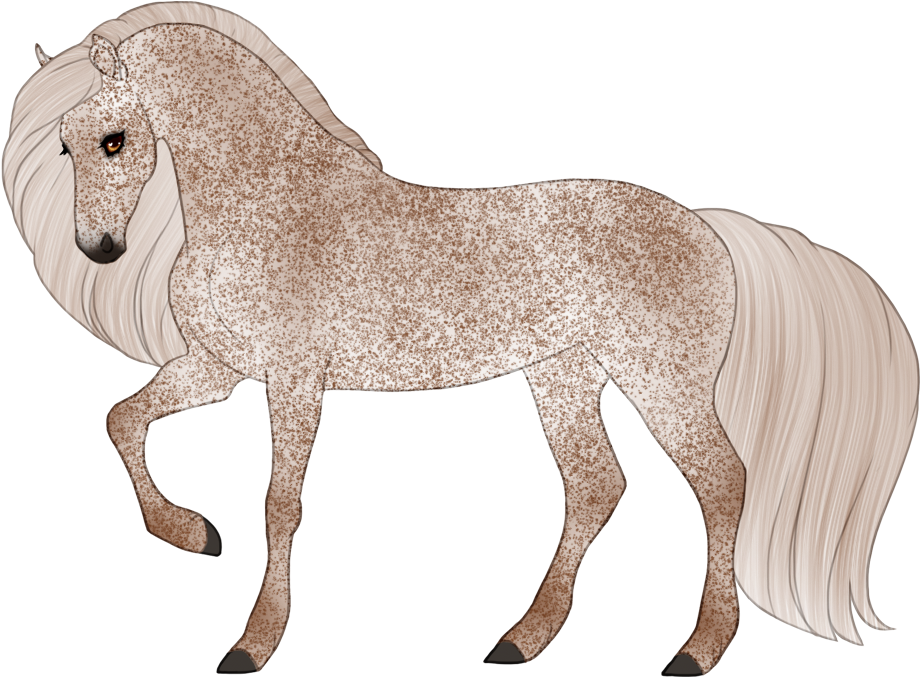
Fleabitten grey
chestnut + grey
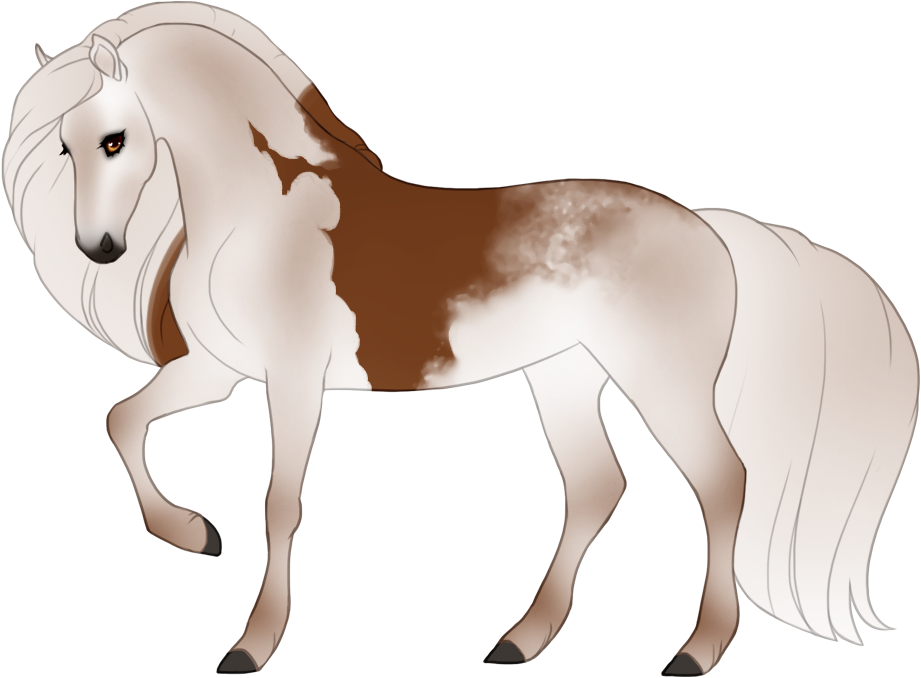
Mismarked grey, "bloody shoulder"
chestnut + grey
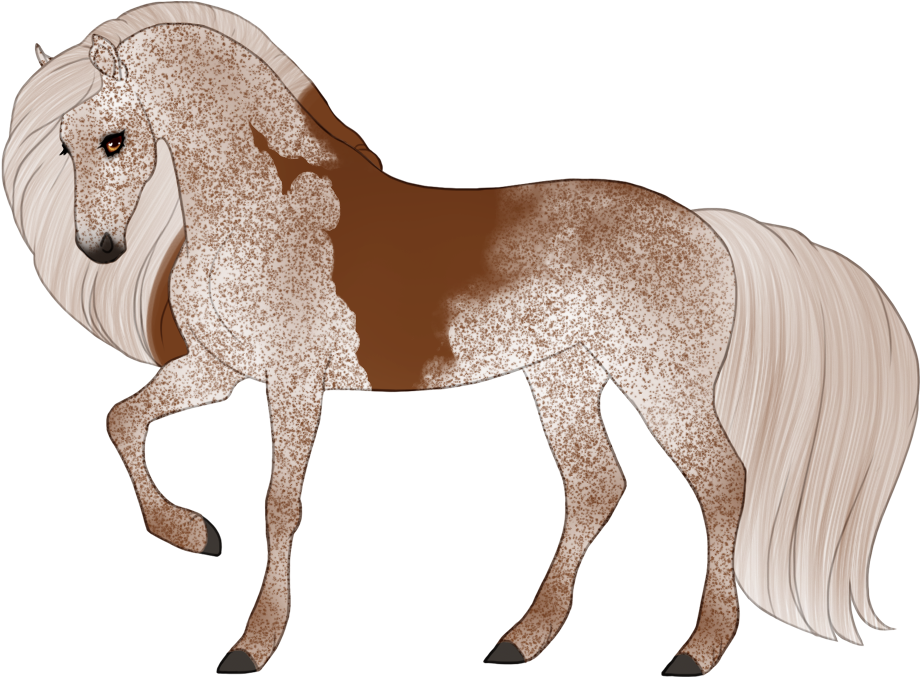
Fleabitten mismarked grey
chestnut + grey
Pangare
PP / nP
Appearance
Pangare causes the hair around the underside of the body as well as around the eyes and muzzle to be much lighter, giving the horse an appearance similar to countershading.
It can optionally extend down the legs as well.
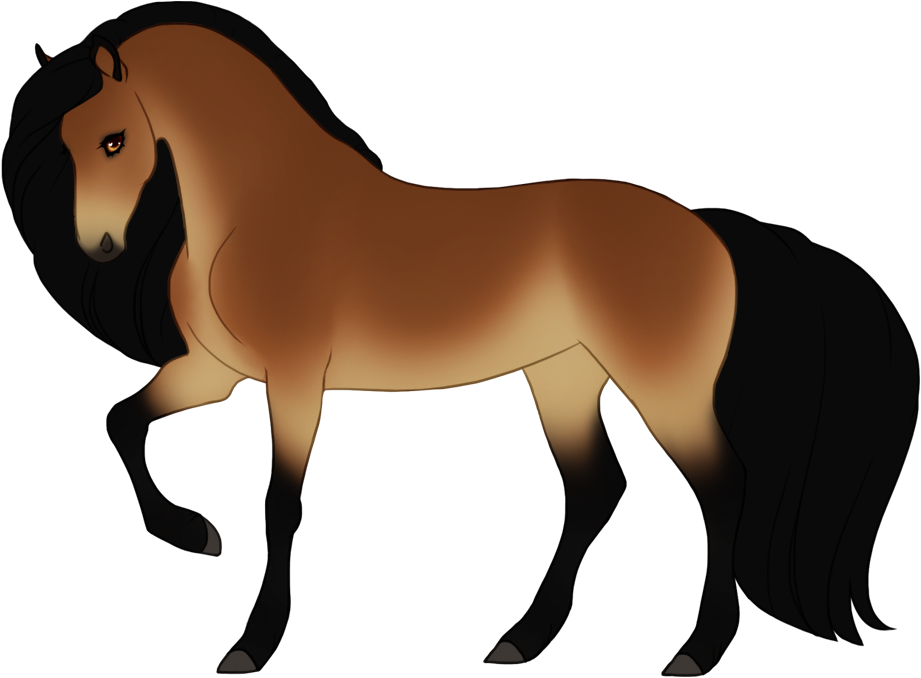
Bay pangare
bay + pangare
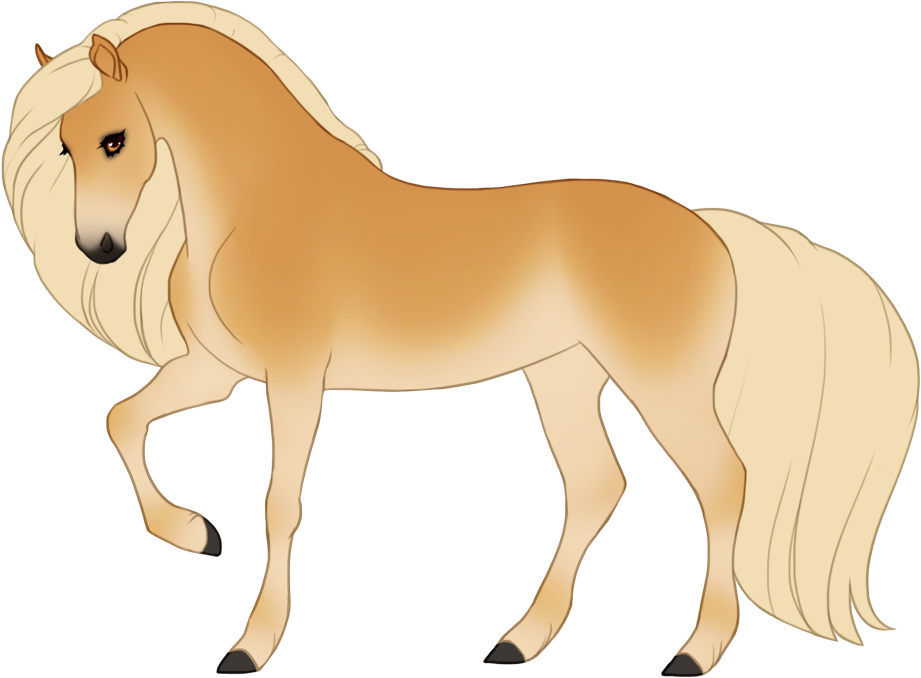
Palomino pangare
chestnut + cream + pangare
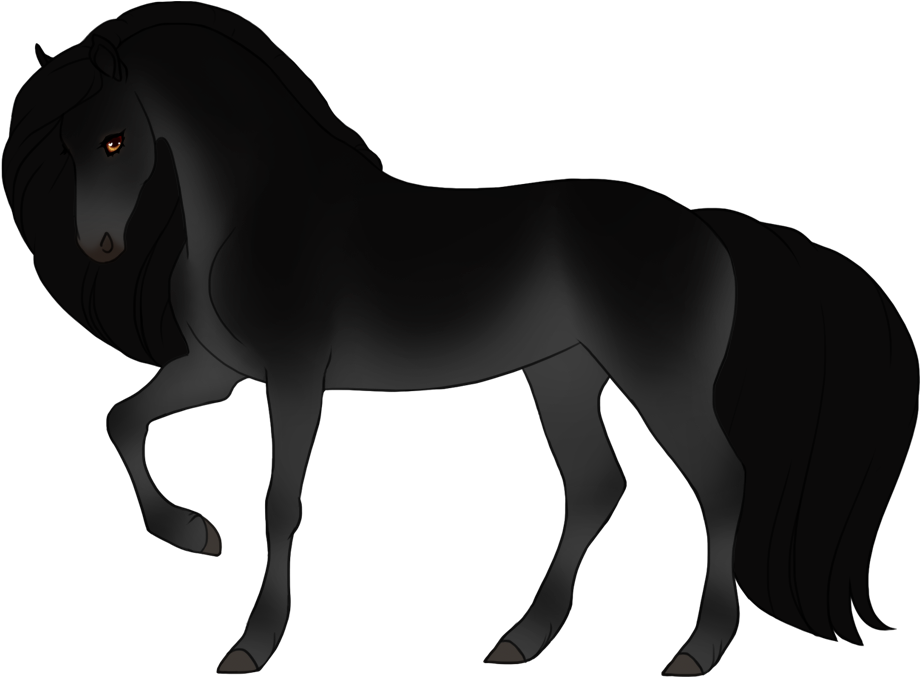
Black pangare
black + pangare
Optional effect: Wild
Pangare can have more defined edges with a more distinct shape, similar to many wild cervines such as the white tailed deer.
It can also cause the affected areas to be significantly lighter or even white. Important note that it won't affect eye, skin or hoof/horn color regardless how light it is, because it is not a white pattern nor a dilute.
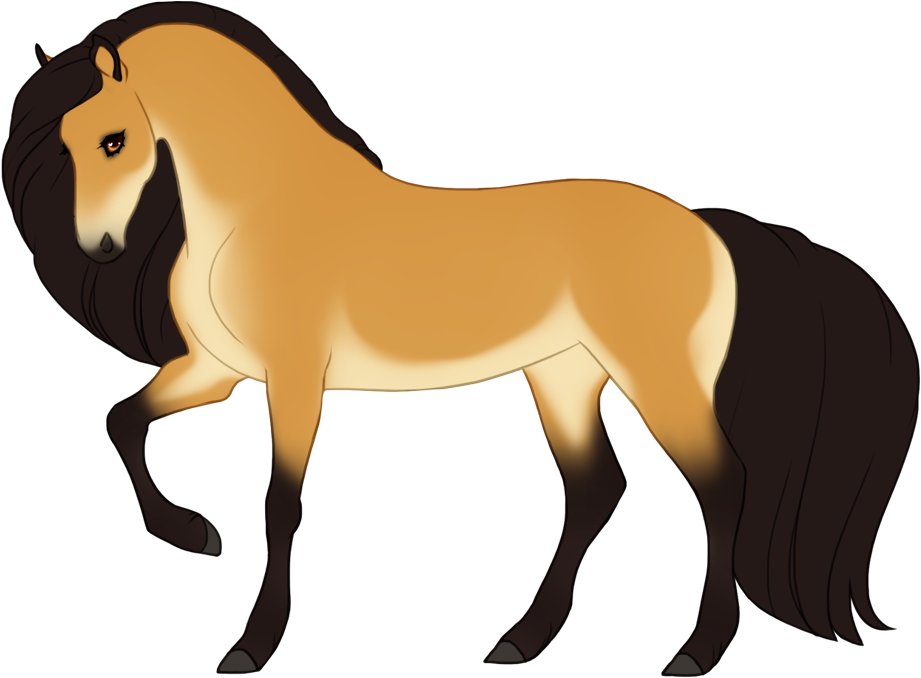
Buckskin pangare
bay + cream + pangare
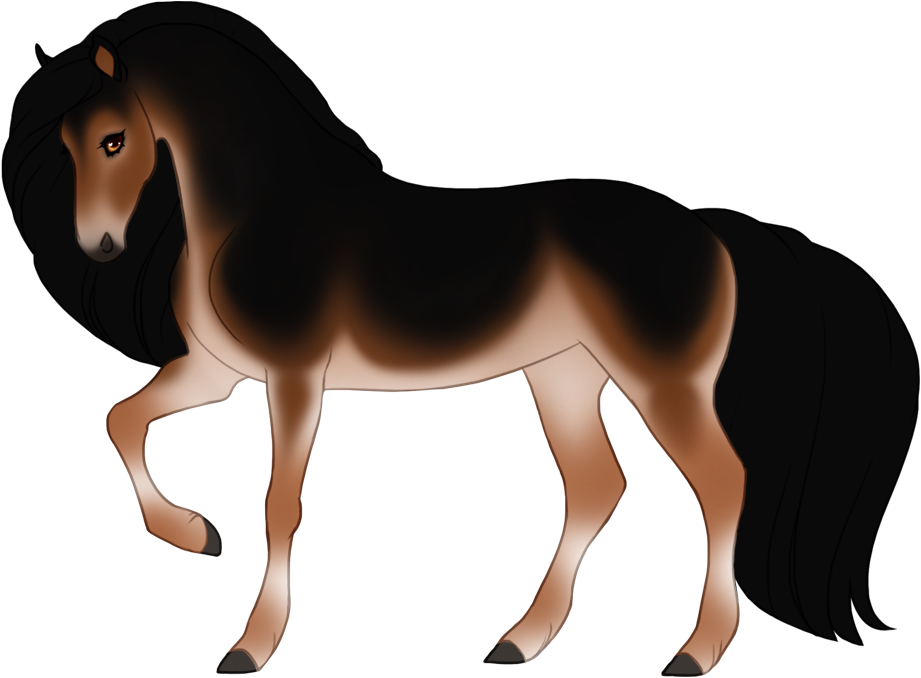
Tanpoint bay pangare
tanpoint bay + pangare
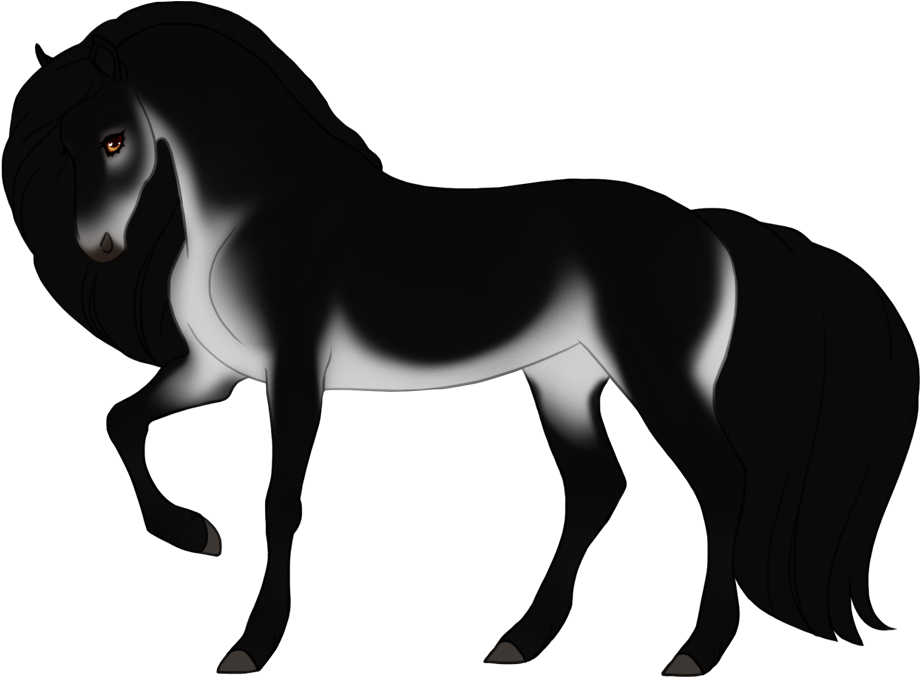
Black pangare
black + pangare
Silver
ZZ / nZ
Appearance
Silver affects the mane and tail, lightening it anywhere from just slightly lighter (brown or grey) to pure white.
Can be darker at the roots, or a solid color throughout.
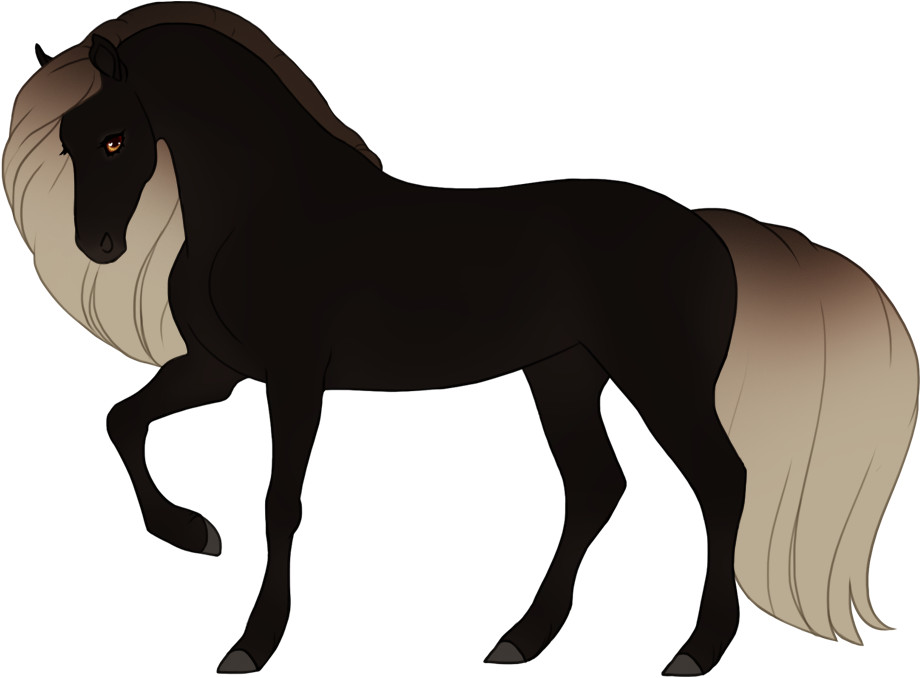
Silver black
black + silver
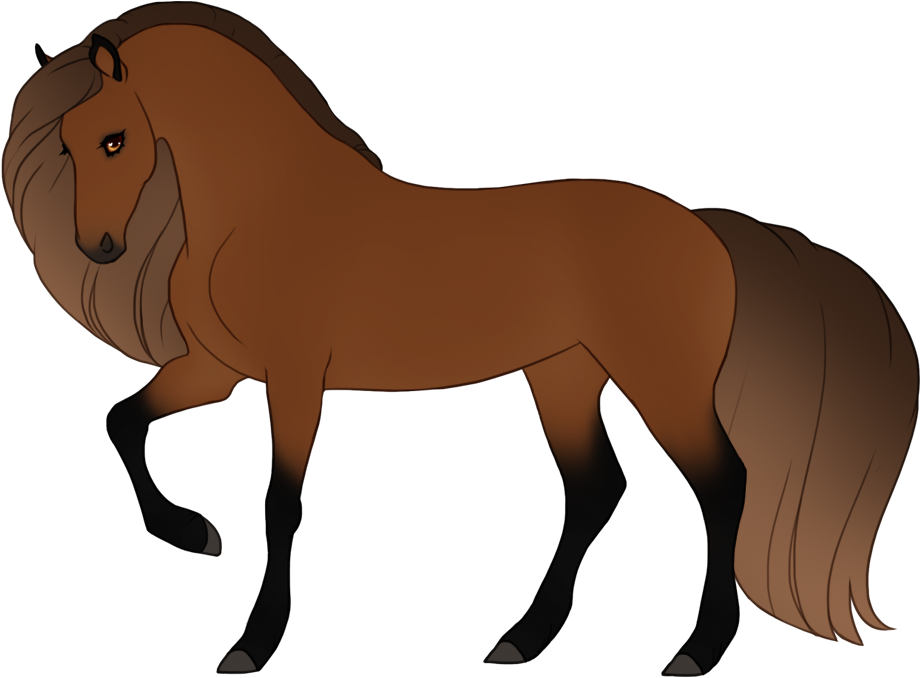
Silver bay
bay + silver
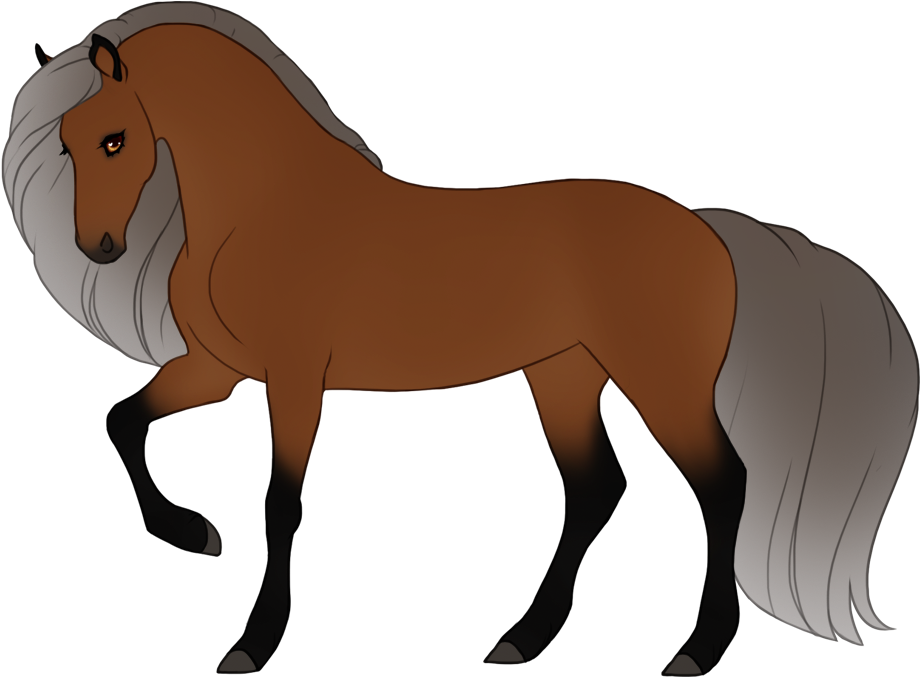
Silver bay
bay + silver
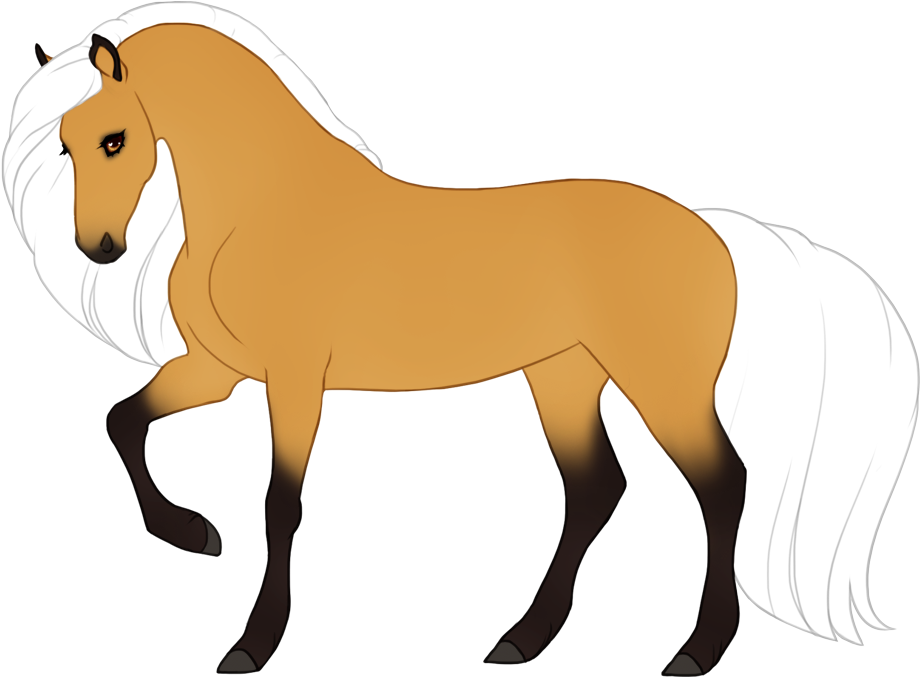
Silver buckskin
bay + cream + silver
Optional effect: Body silvering
Silver can optionally fully or partially lighten the body coat as well, generally affecting the black-pigment areas and lightening them into a soft brown or grey.
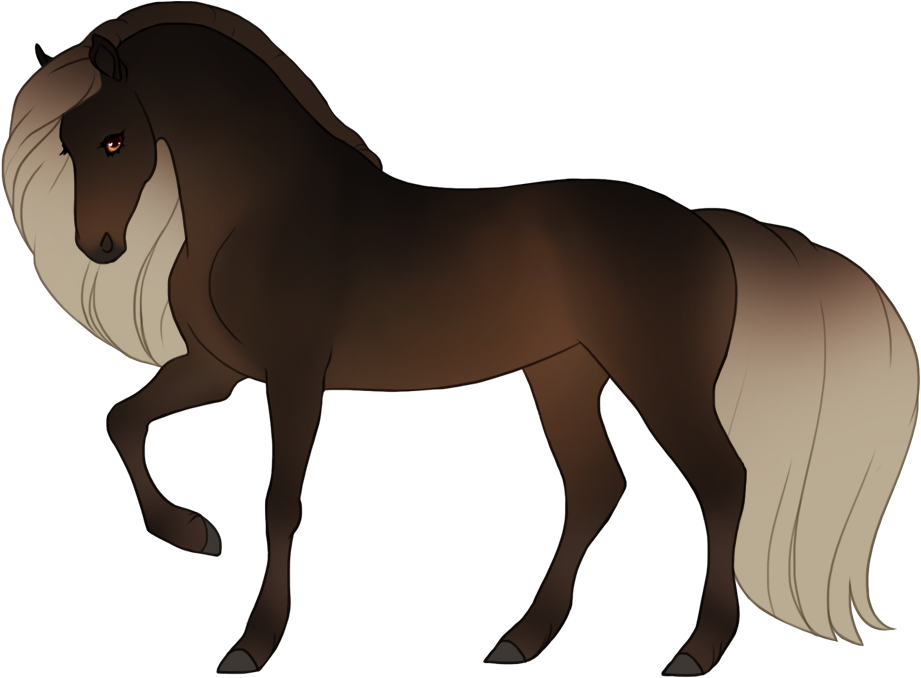
Silver black
black + silver
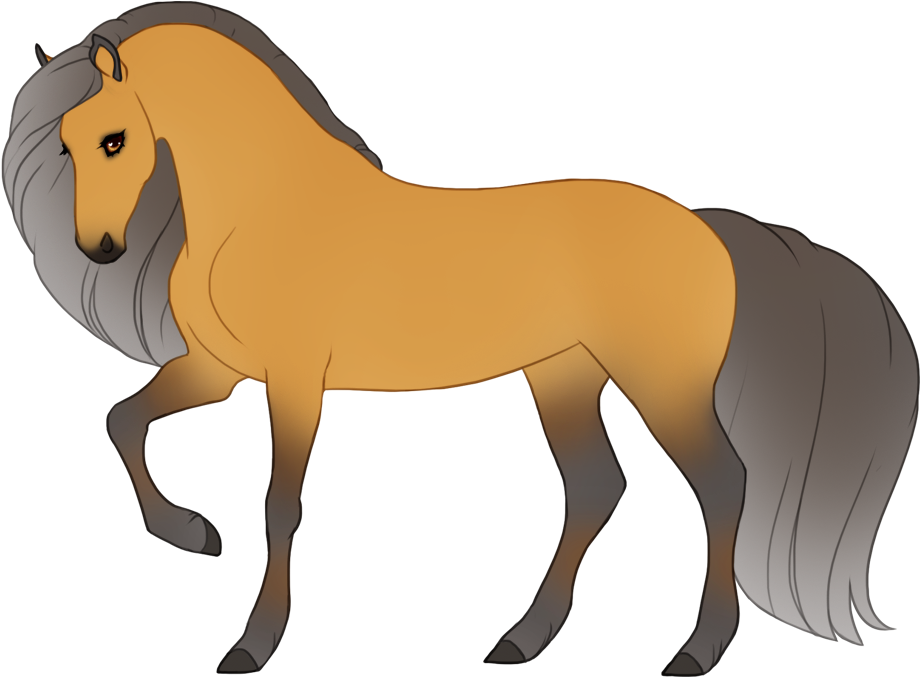
Silver buckskin
bay + cream + silver
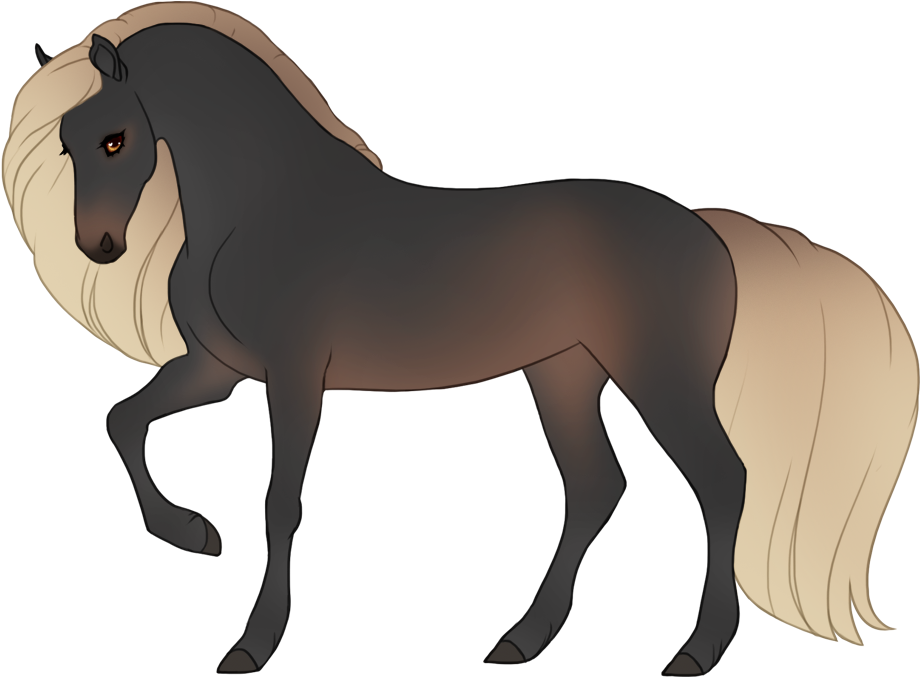
Silver seal bay
seal bay + silver
Sooty
StySty / nSty
Appearance
Sooty adds black or dark hairs to the coat, giving it a gradiented darkening effect. Sooty can range anywhere from pure black to just slightly darker than the base coat, and can be black even if dilutes are present.
Sooty can affect any part of the body.
Can optionally affect mane and tail.
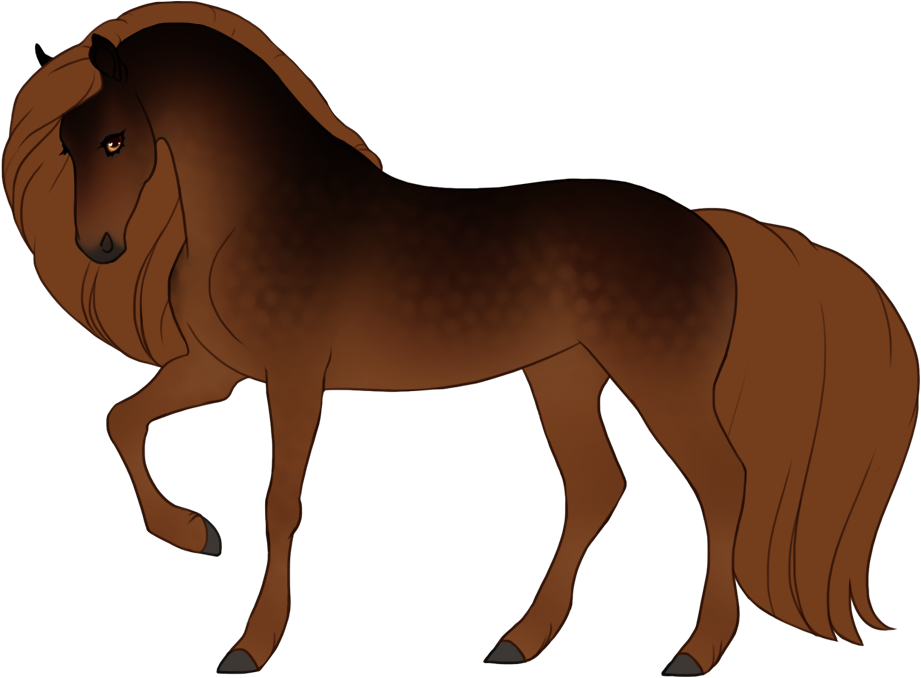
Sooty chestnut
chestnut + sooty
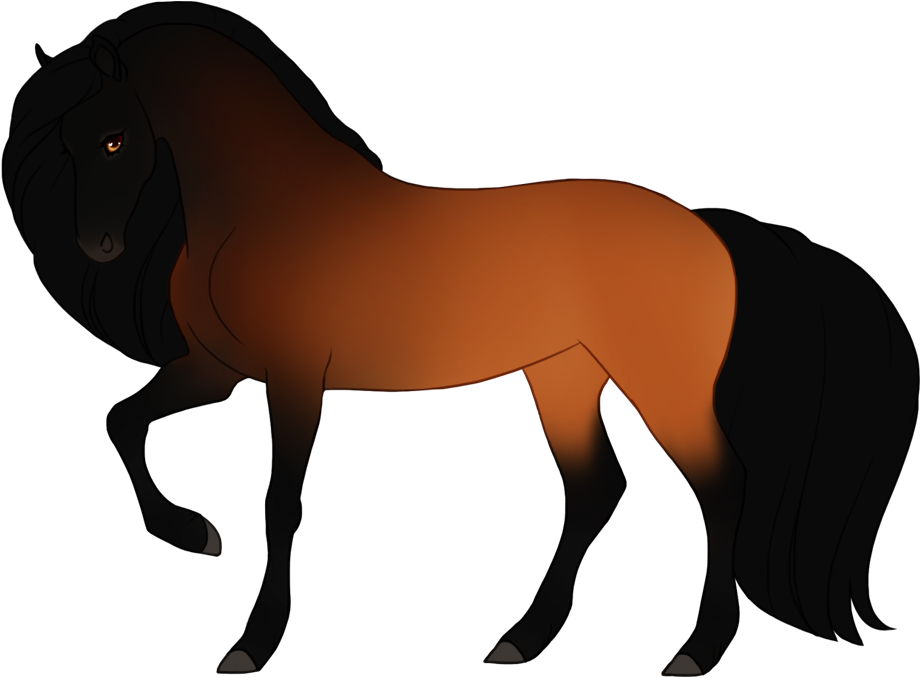
Sooty bay
bay + sooty
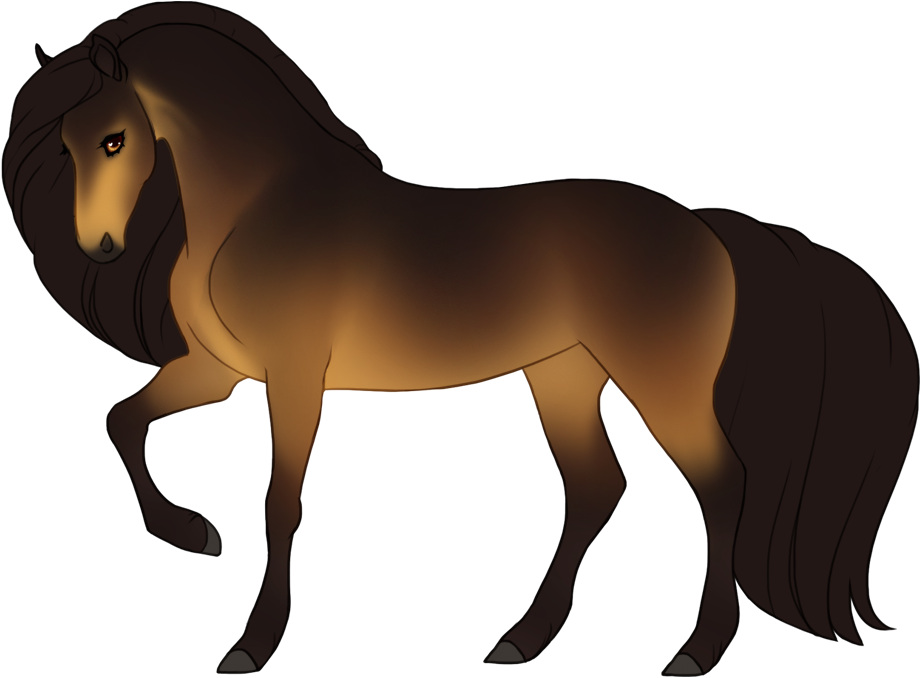
Sooty buckskin
bay + cream + sooty
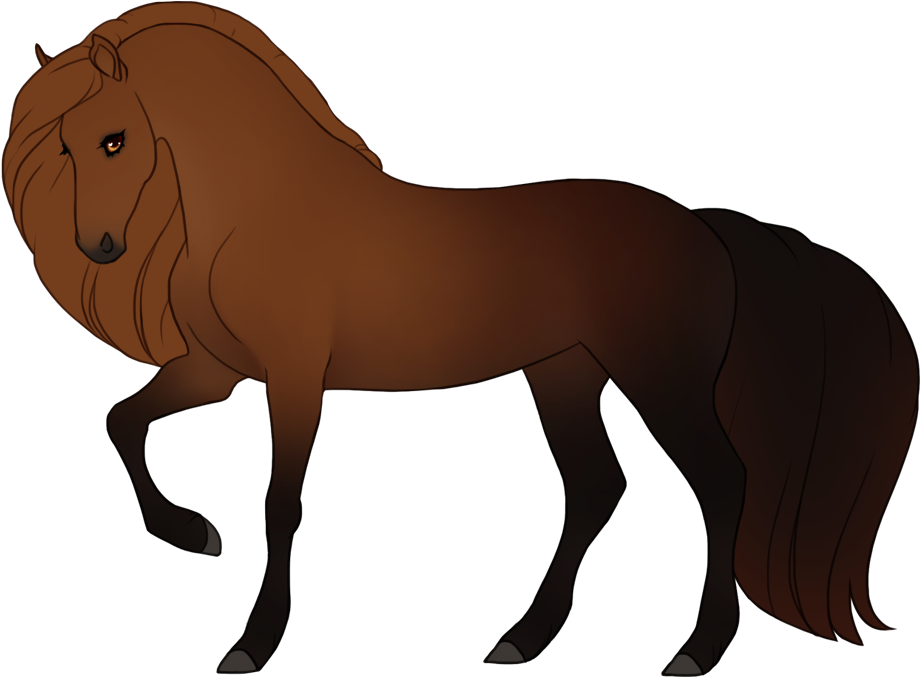
Sooty chestnut
chestnut + sooty
Optional effect: Dapples
Dapples can be darker or lighter, appearing as holes in the sooty or as sooty-colored dapples.
Dapples are not written in the phenotype.
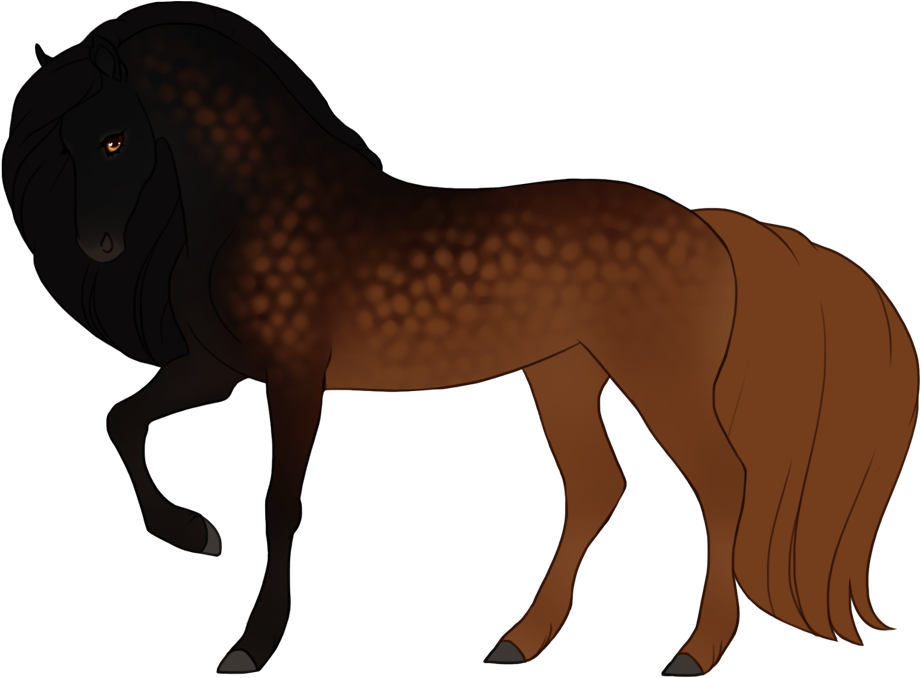
Sooty chestnut with dapples
chestnut + sooty
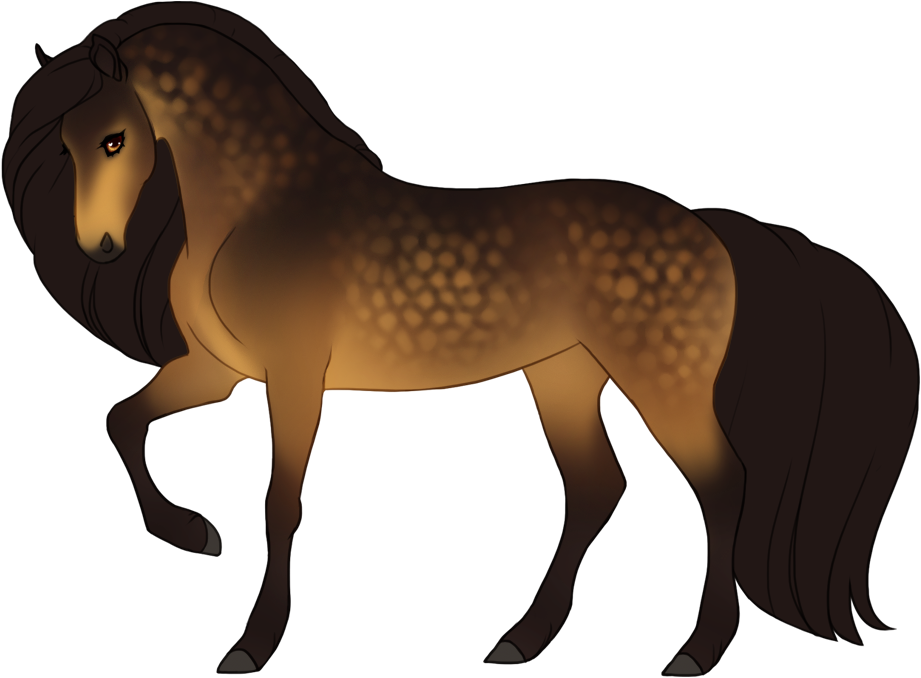
Sooty buckskin with dapples
bay + cream + sooty
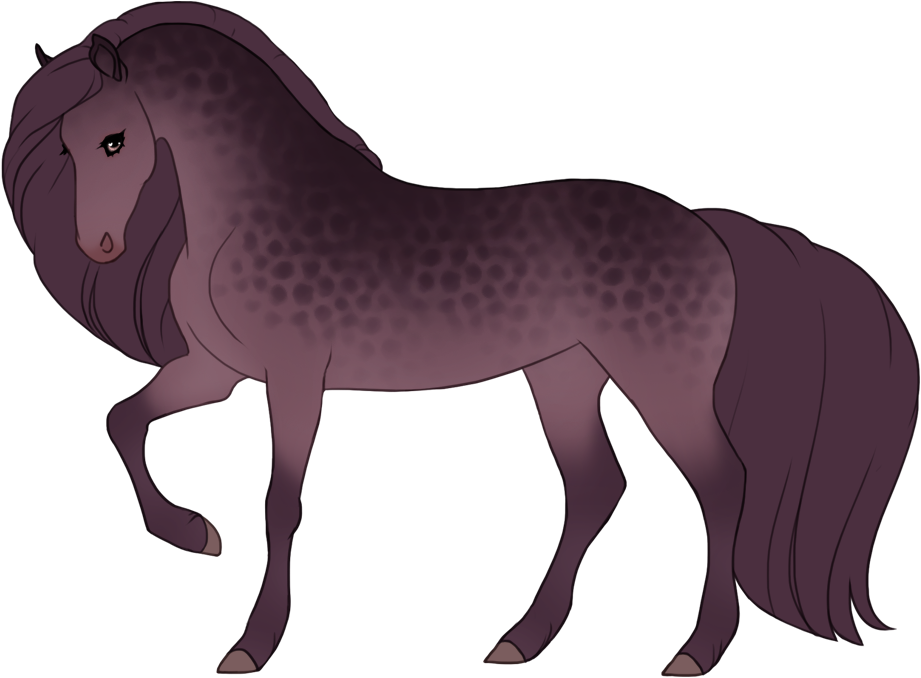
Sooty blue ginger with dapples
bay + blue + tawny + sooty
Optional effect: Soot flakes
Sooty can optionally have soot flakes or "grease spots", causing dark smudges or spots in the coat.
Soot flakes are always darker than the coat, and can optionally affect mane and tail.
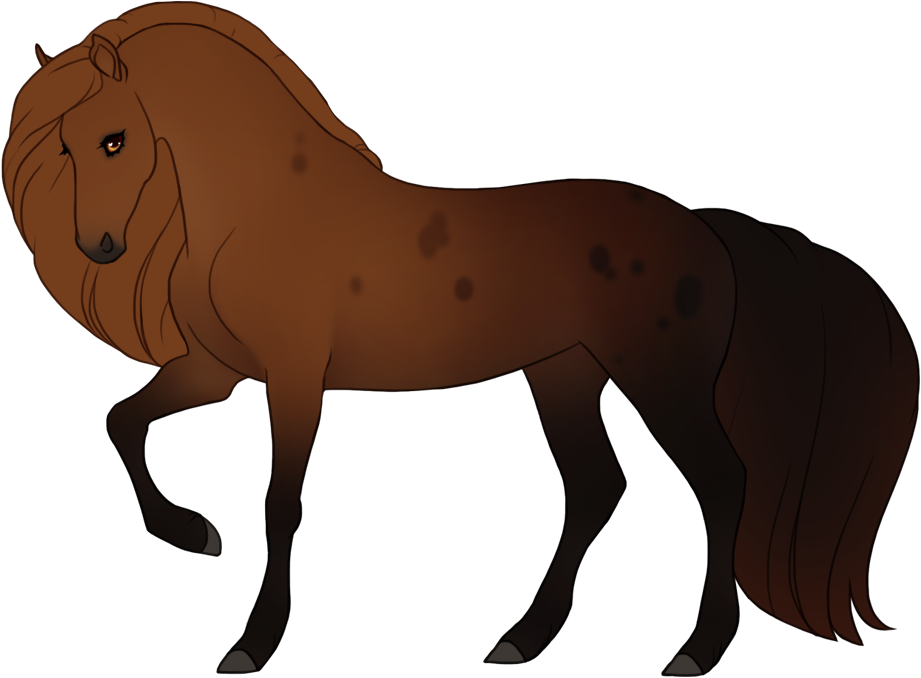
Sooty chestnut with soot flakes
chestnut + sooty
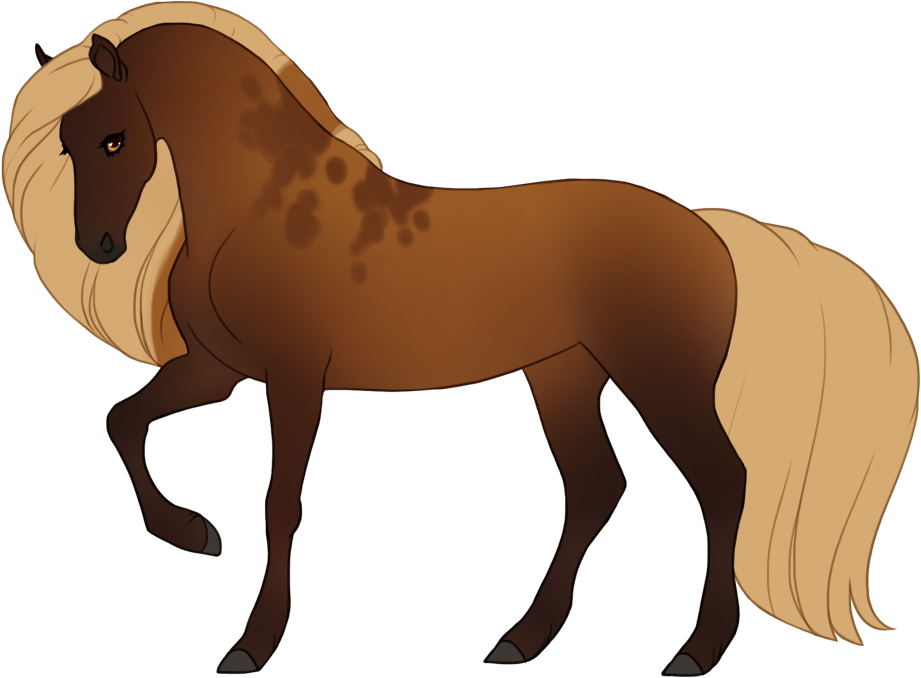
Sooty palomino with soot flakes
chestnut + cream + sooty
Chromatic
CmtCmt / nCmt
Appearance
Chromatic causes the base coat to have a much greater variation in brightness and/or saturation.
The coat can have significant differences in
If multiple dilutions are present then the coat can optionally cause the dilutions to affect separate areas, for example as shown in the chromatic blue honey example it can show honey areas unaffected by blue, and blue chestnut areas unaffected by tawny.
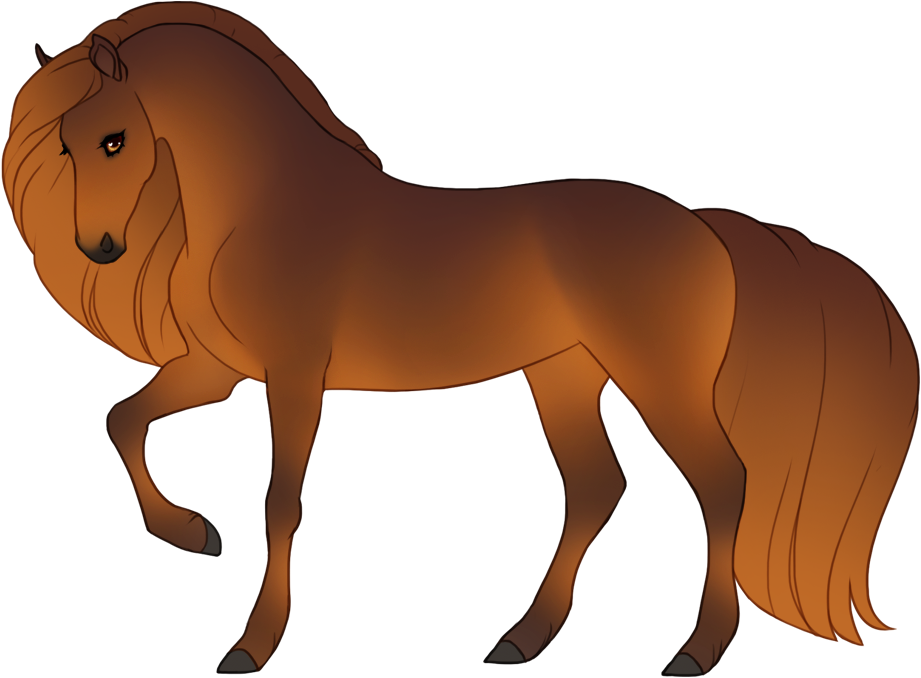
Chromatic chestnut
chestnut + chromatic
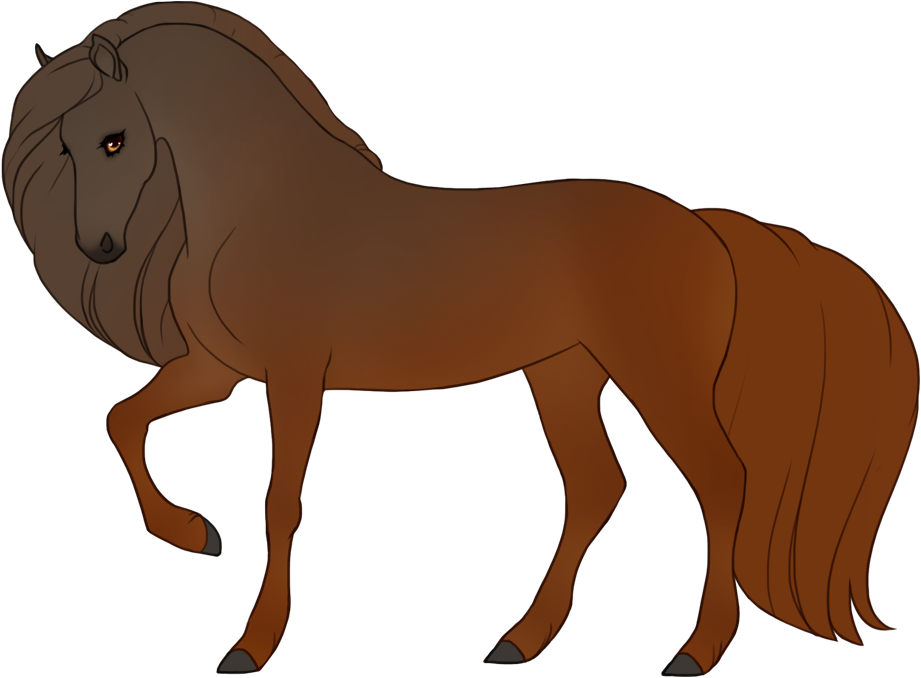
Chromatic chestnut
chestnut + chromatic
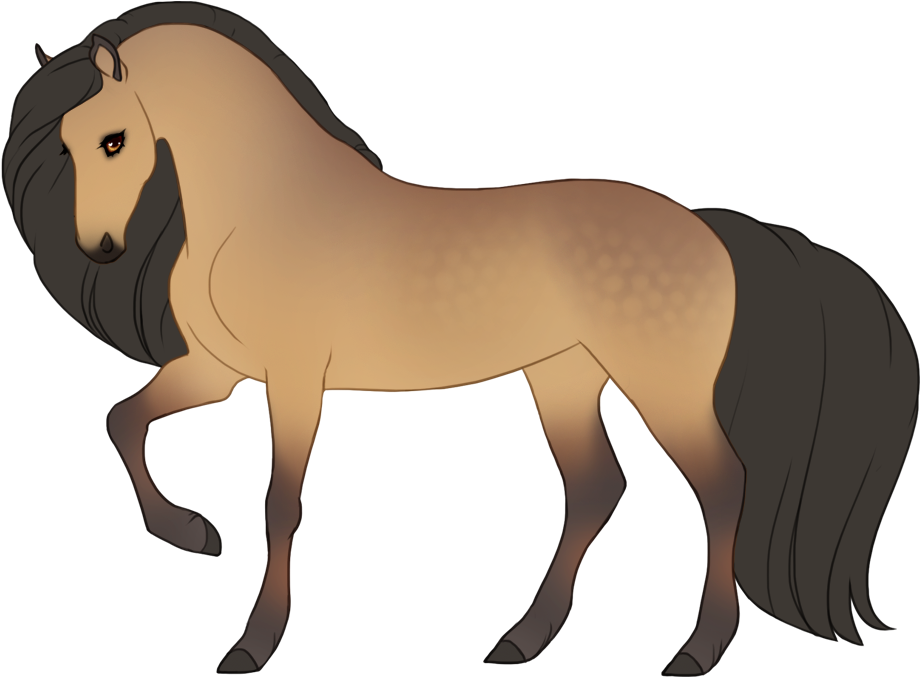
Chromatic buckskin
bay + cream + chromatic
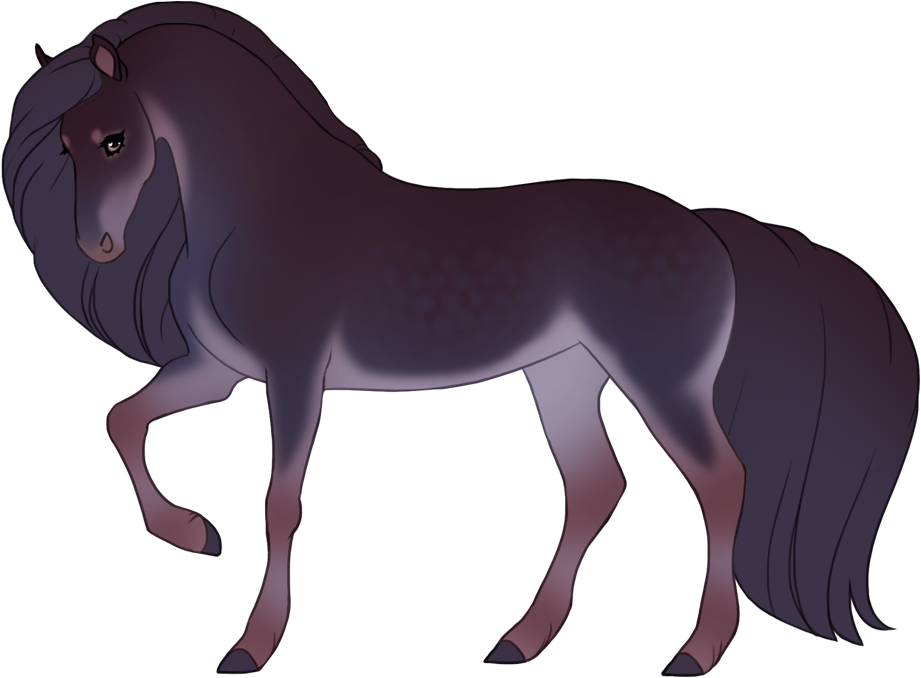
Chromatic blue tanpoint ginger
tanpoint bay + blue + tawny + chromatic
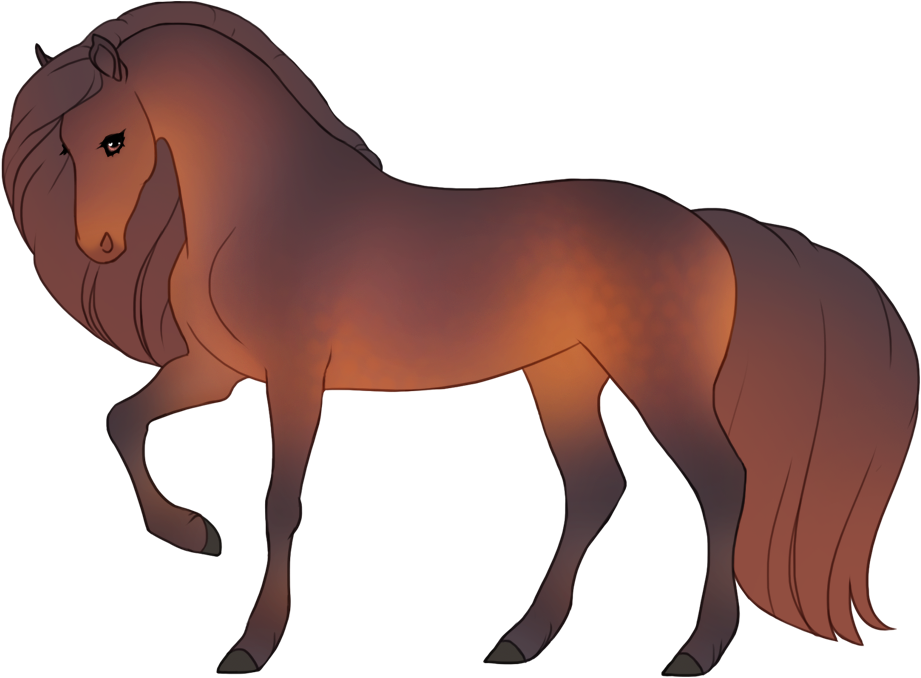
Chromatic blue honey
chestnut + blue + tawny + chromatic
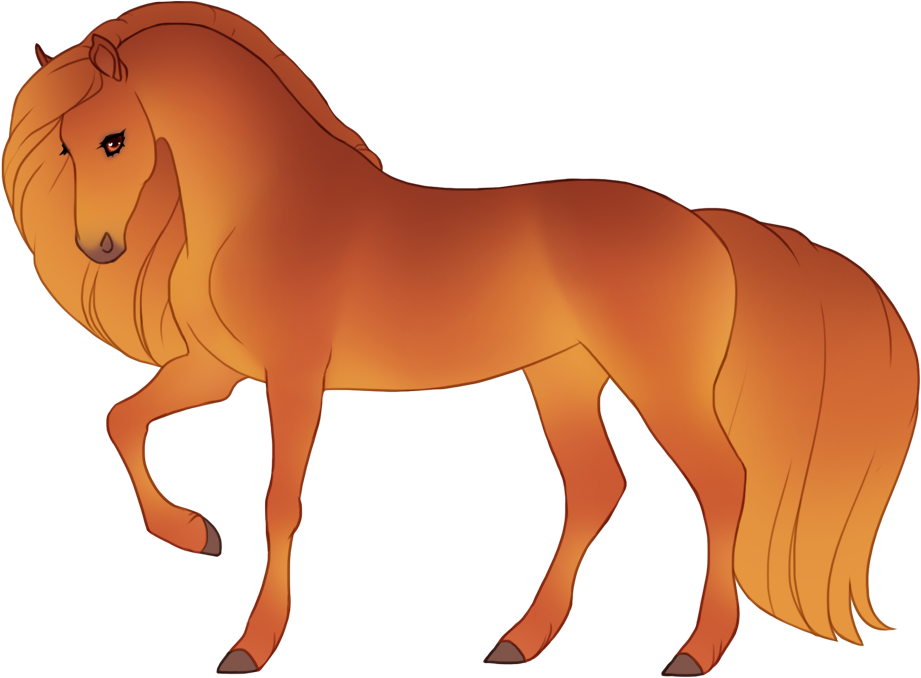
Chromatic honey
chestnut + tawny + chromatic
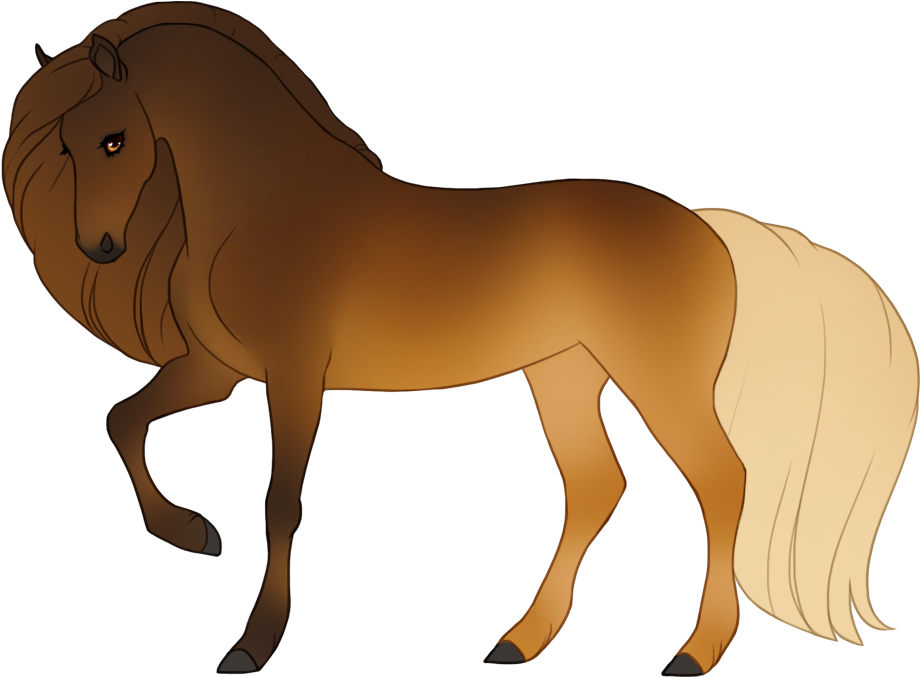
Chromatic palomino
chestnut + cream + chromatic
Optional effect: Mismarked
Mismarked causes patches or streaks in one or more of the chromatic colors on the base coat. Mismarked can have clean/sharp edges or be soft/gradiented, or a mix of both.
Optionally affects mane and tail.
Mismarked is not written in the phenotype.
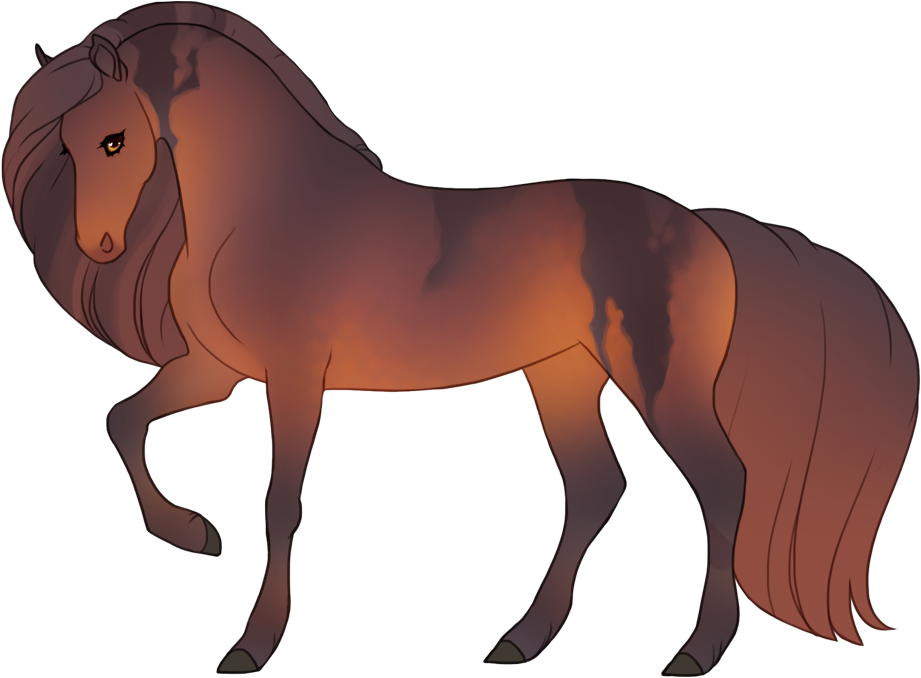
Mismarked chromatic blue honey
chestnut + blue + tawny + chromatic
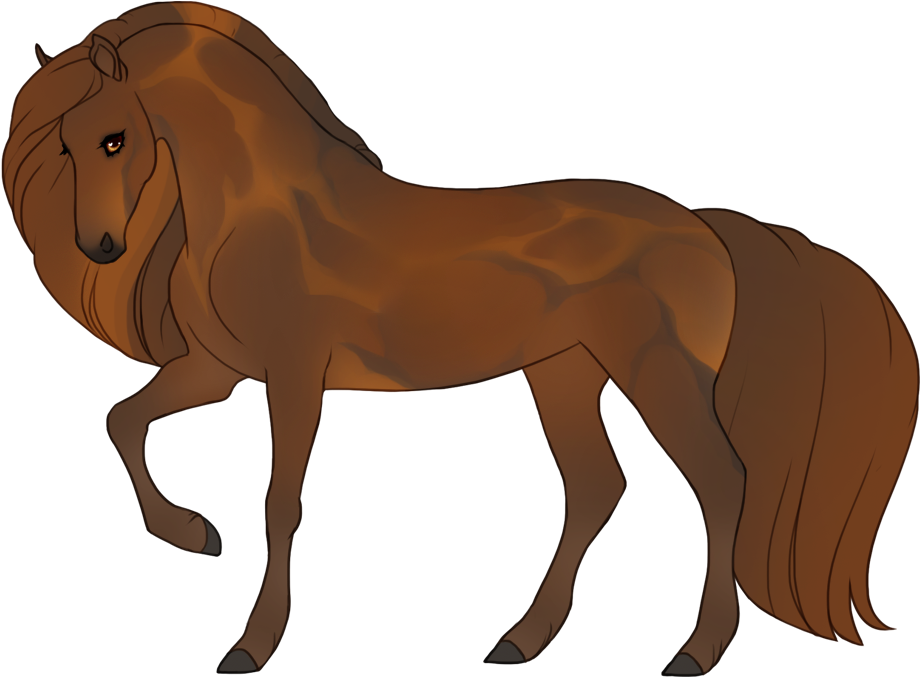
Mismarked chromatic chestnut
chestnut + chromatic
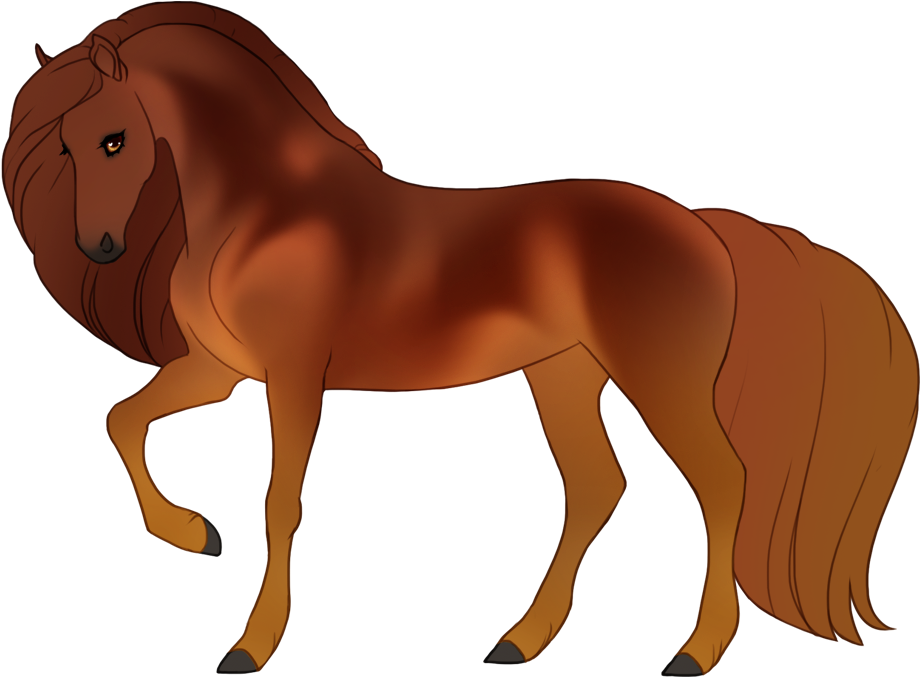
Mismarked chromatic chestnut
chestnut + chromatic
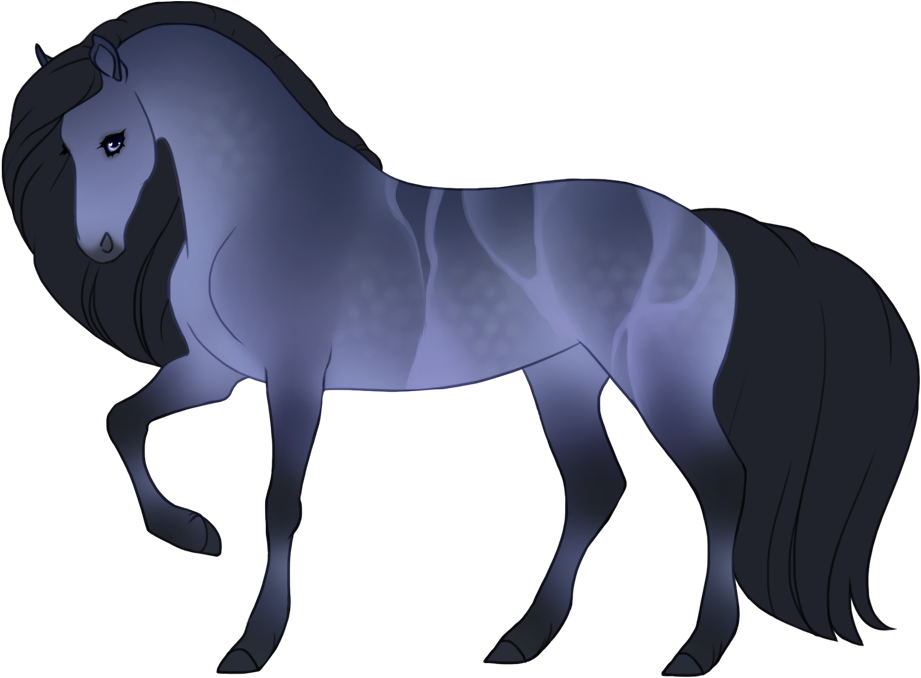
Mismarked chromatic blue bay
chestnut + chromatic